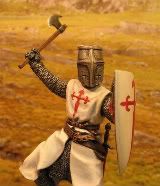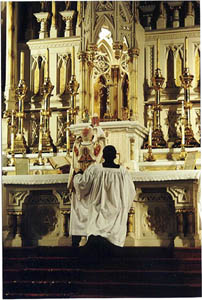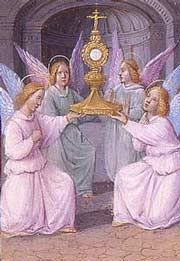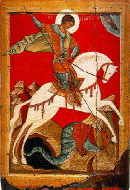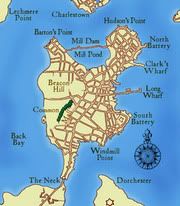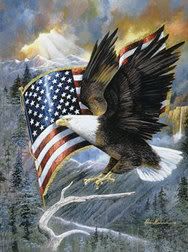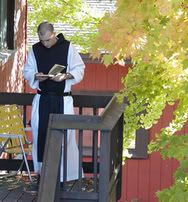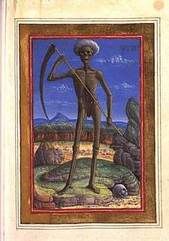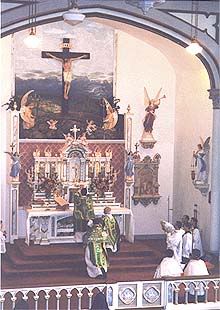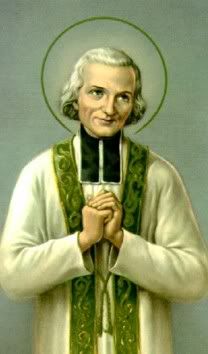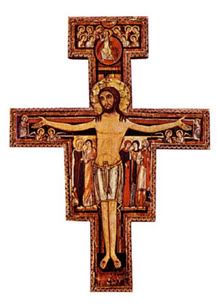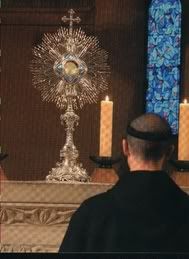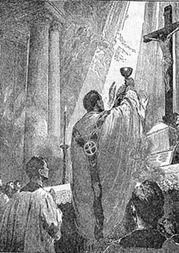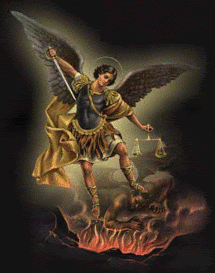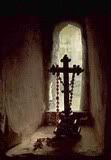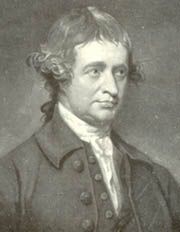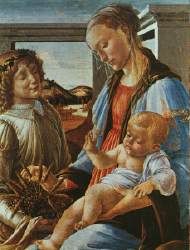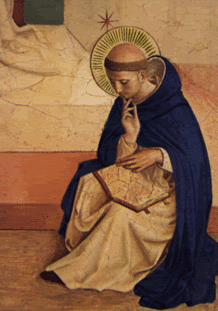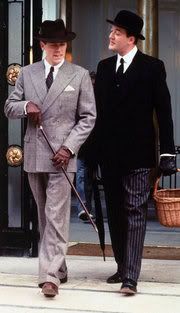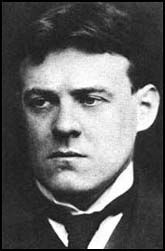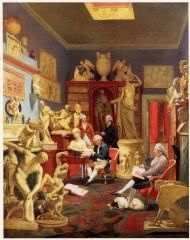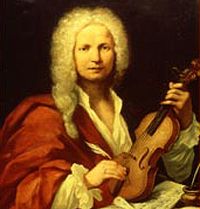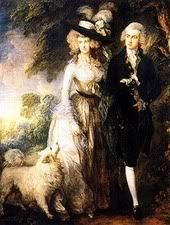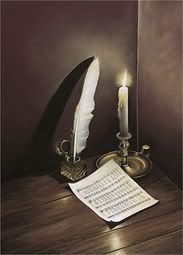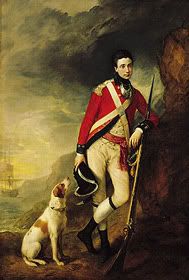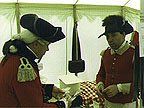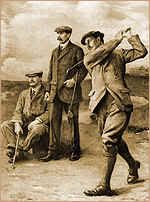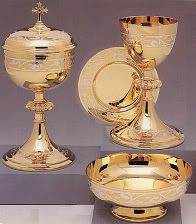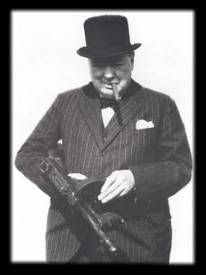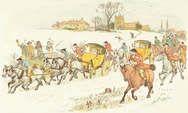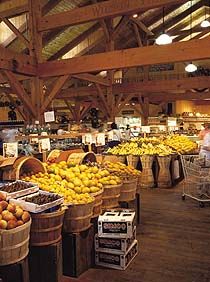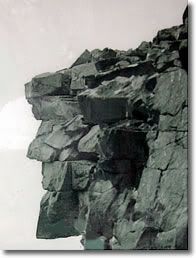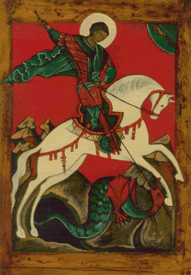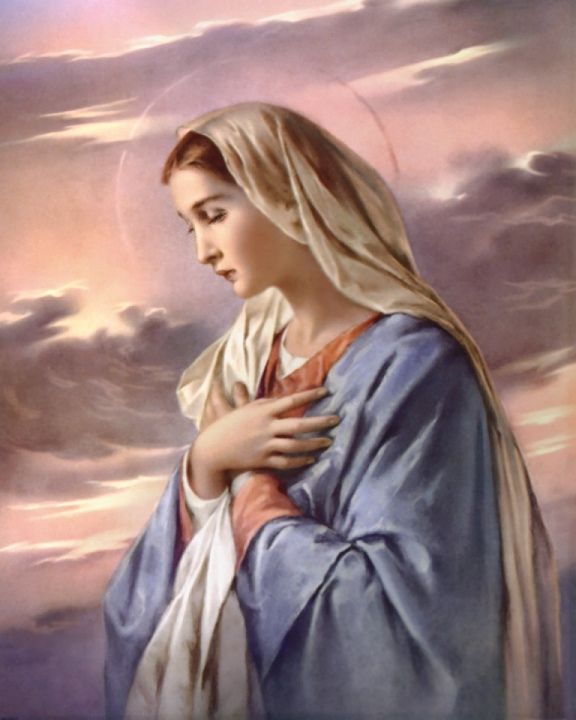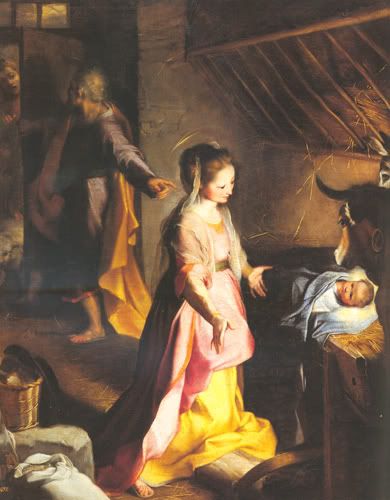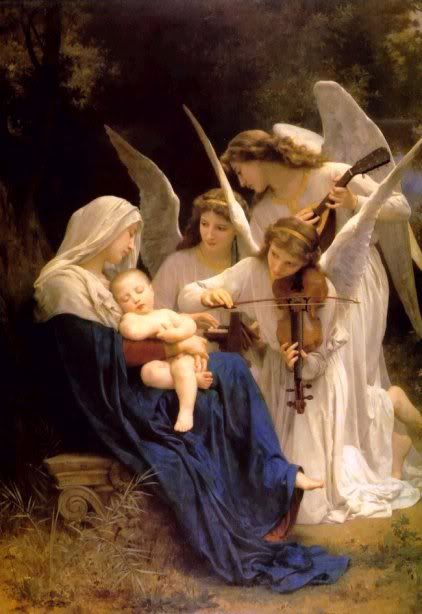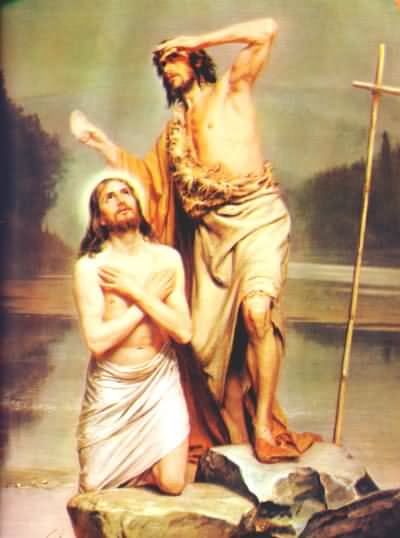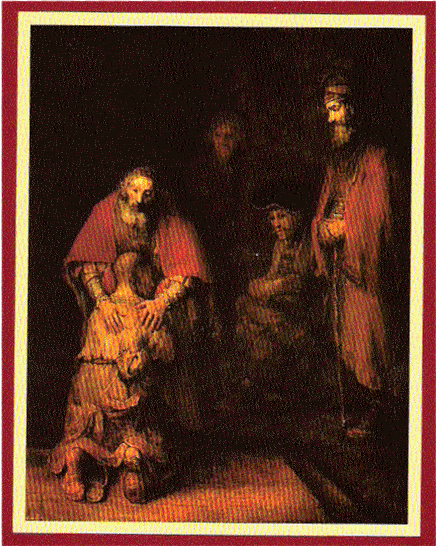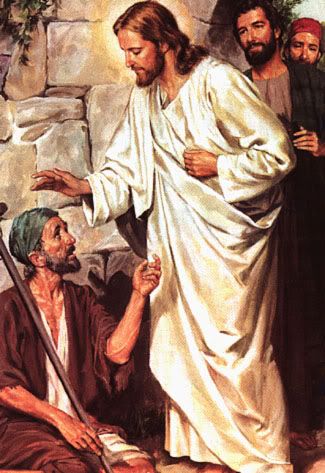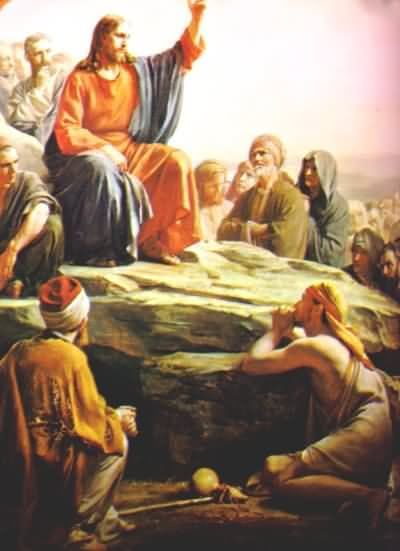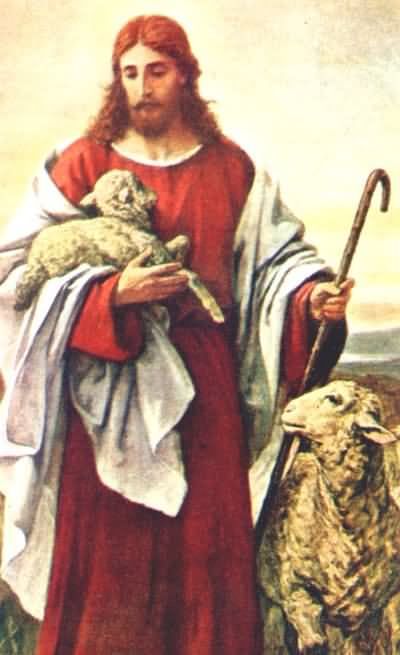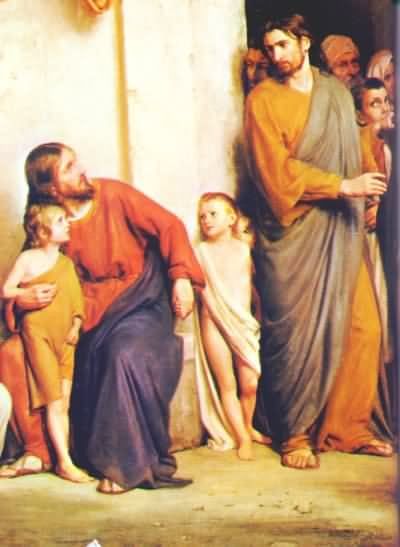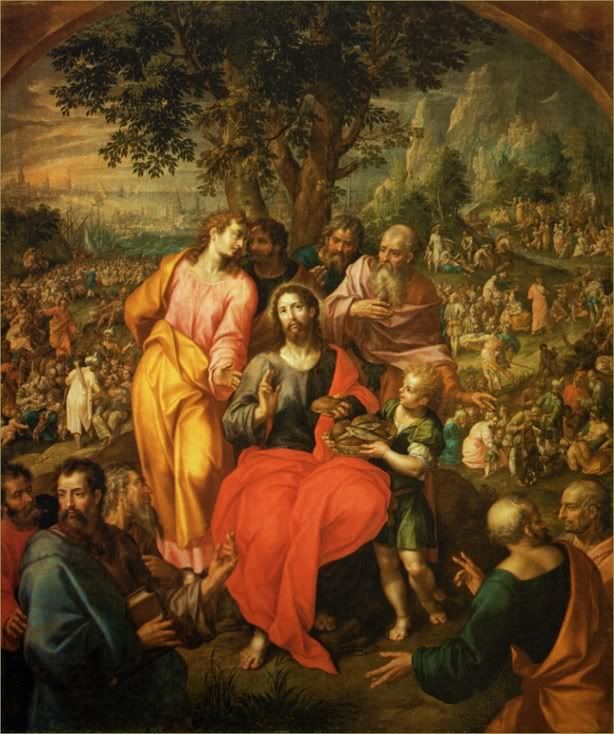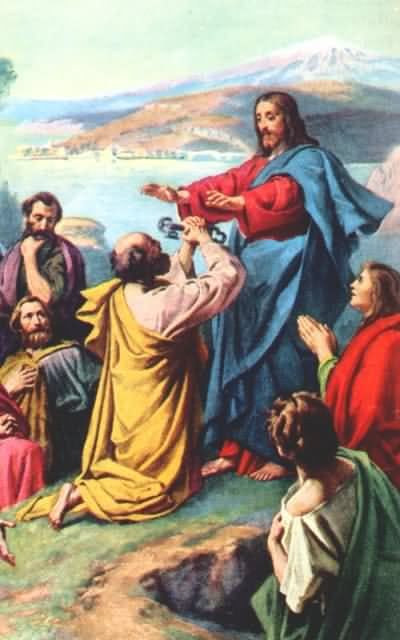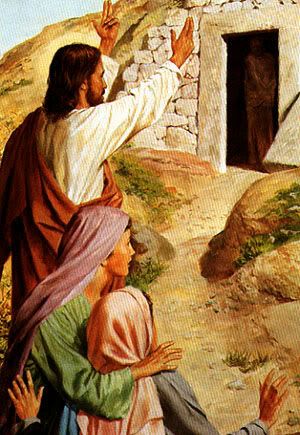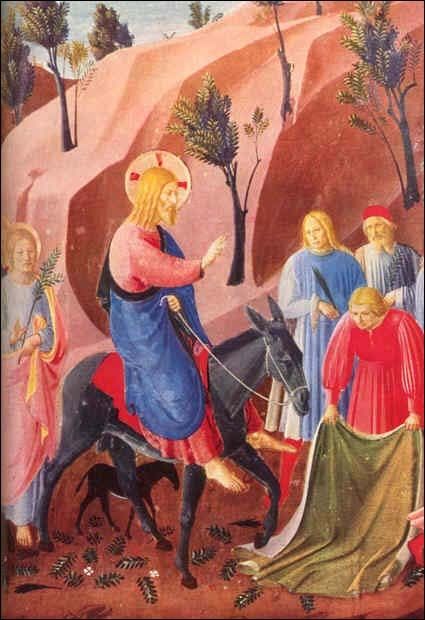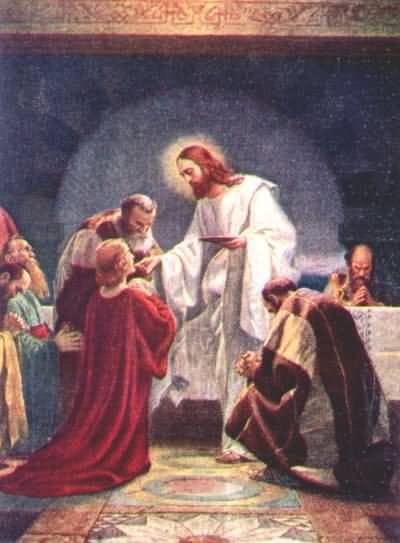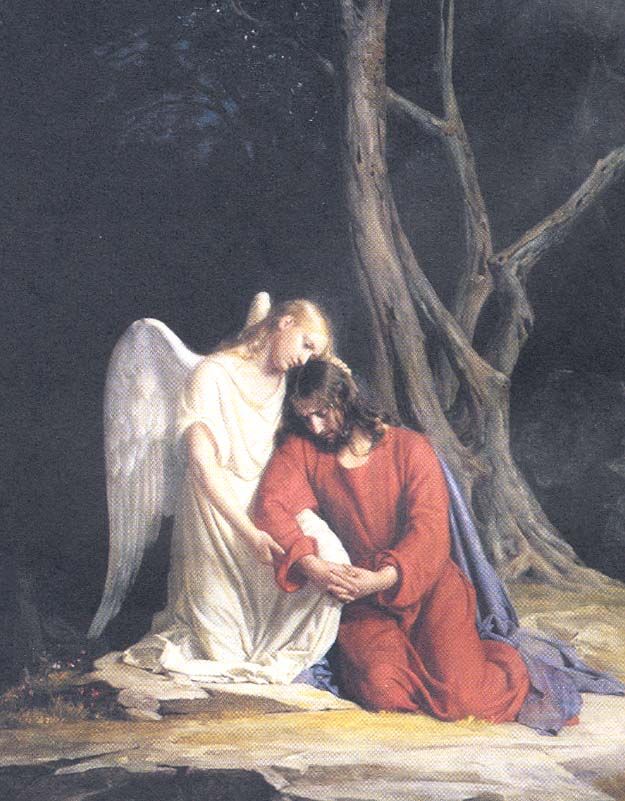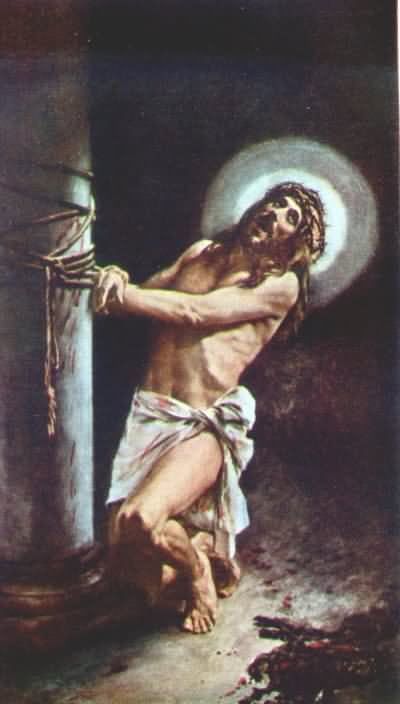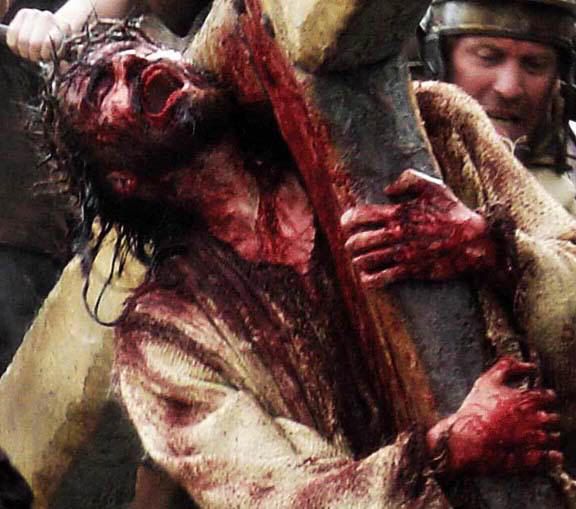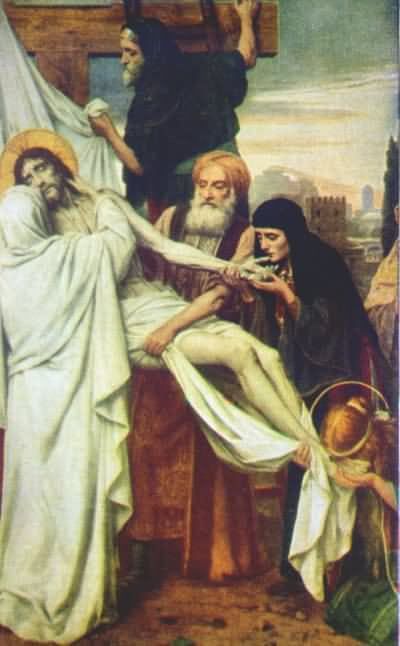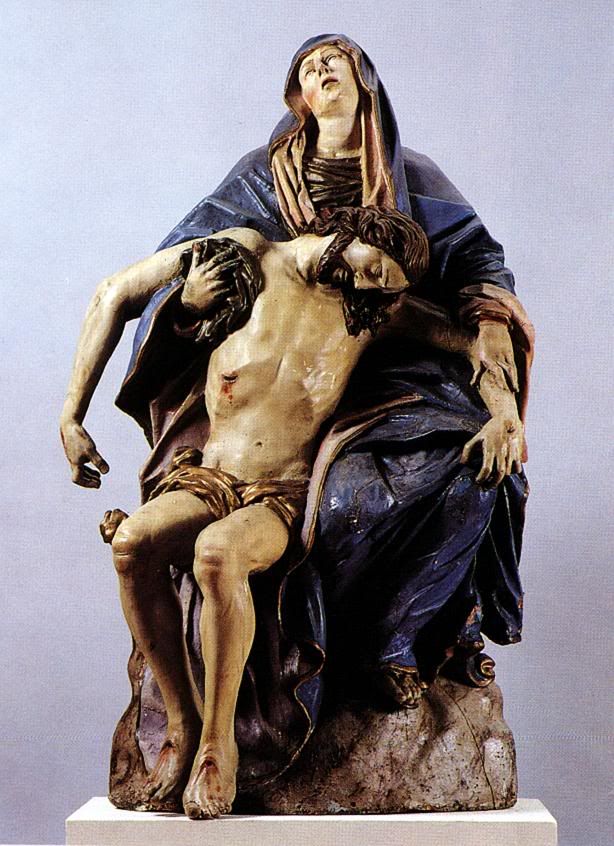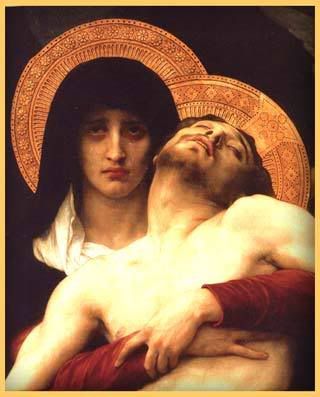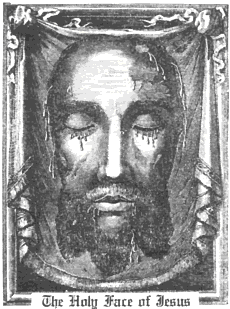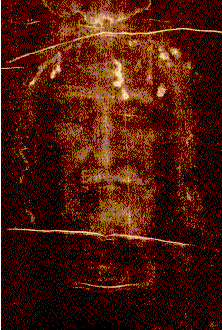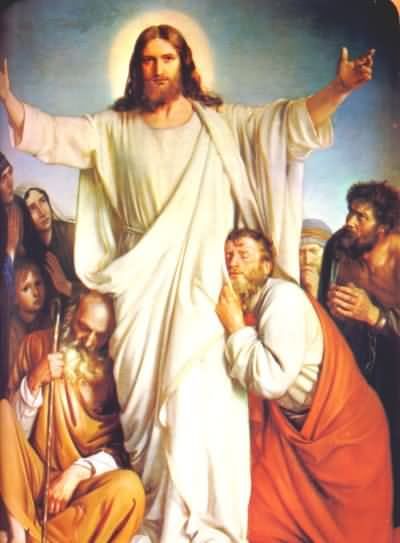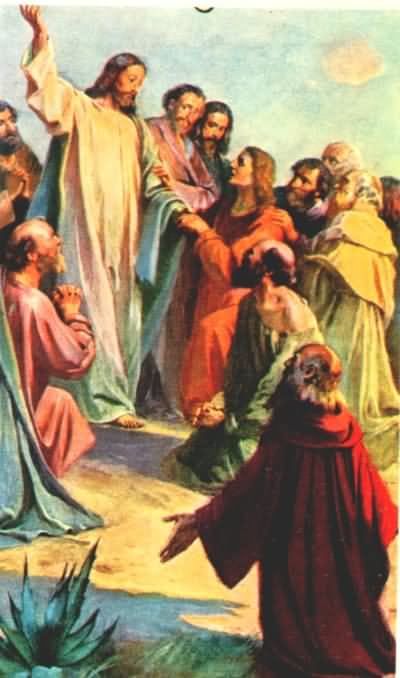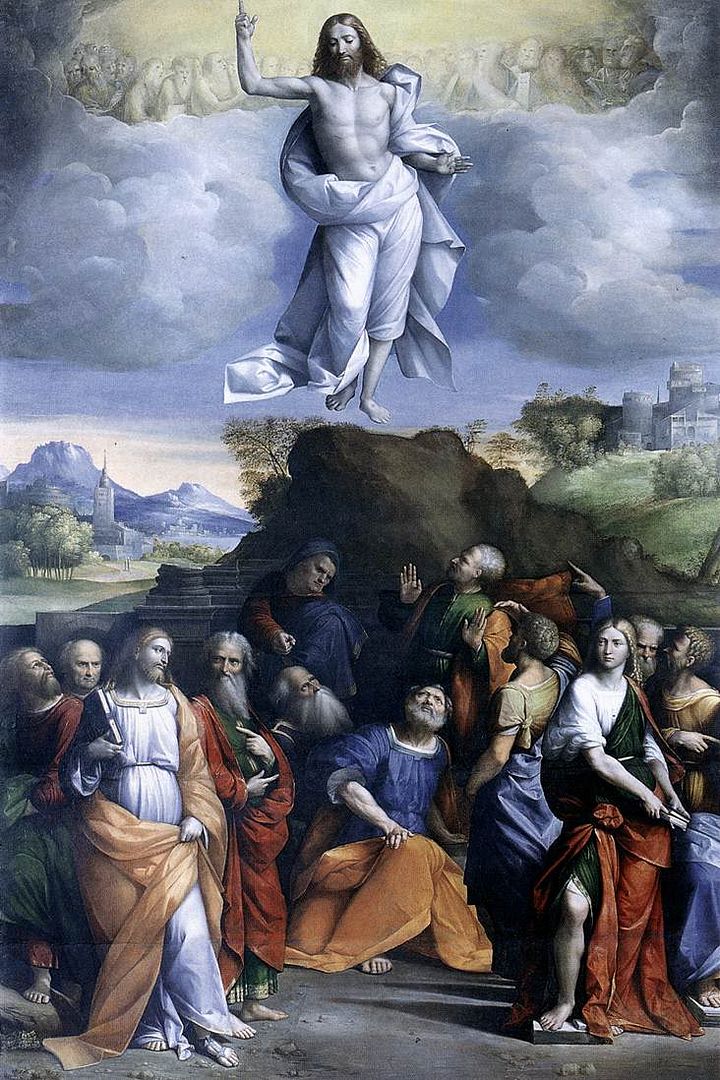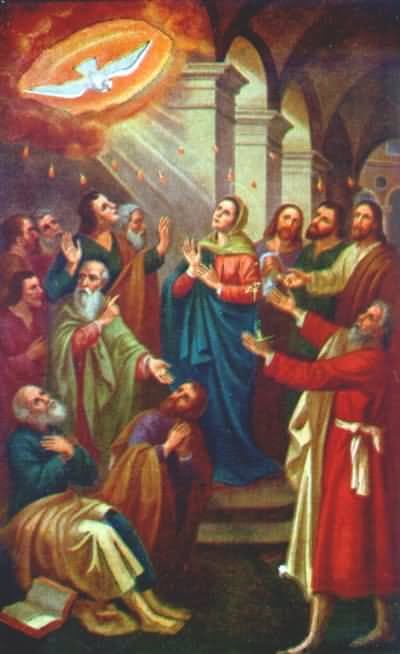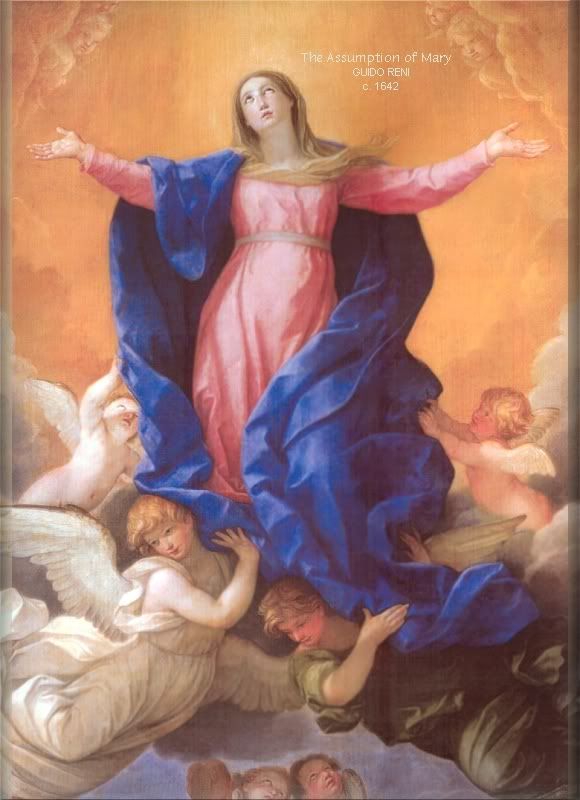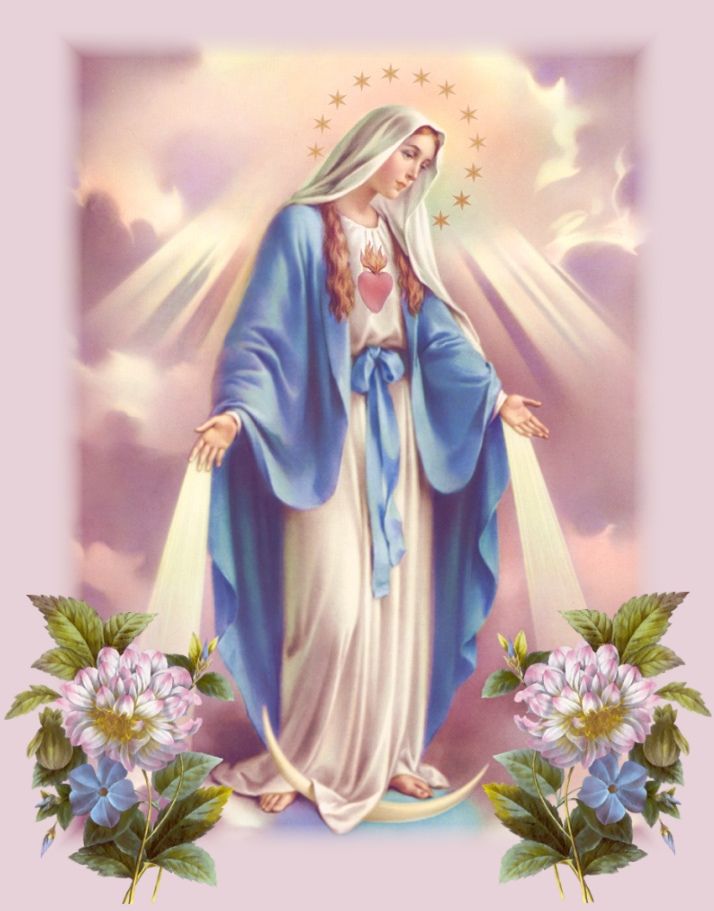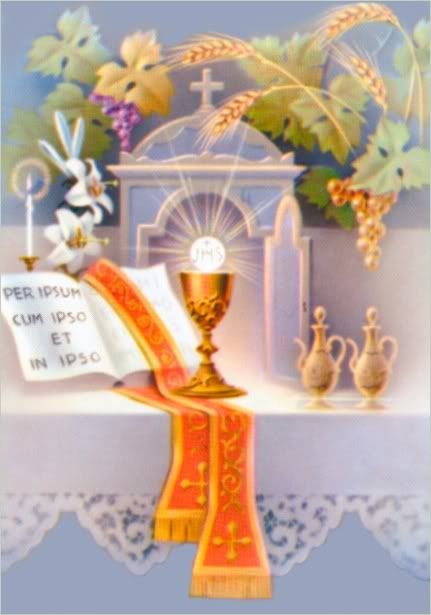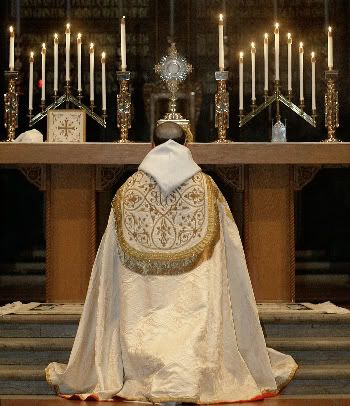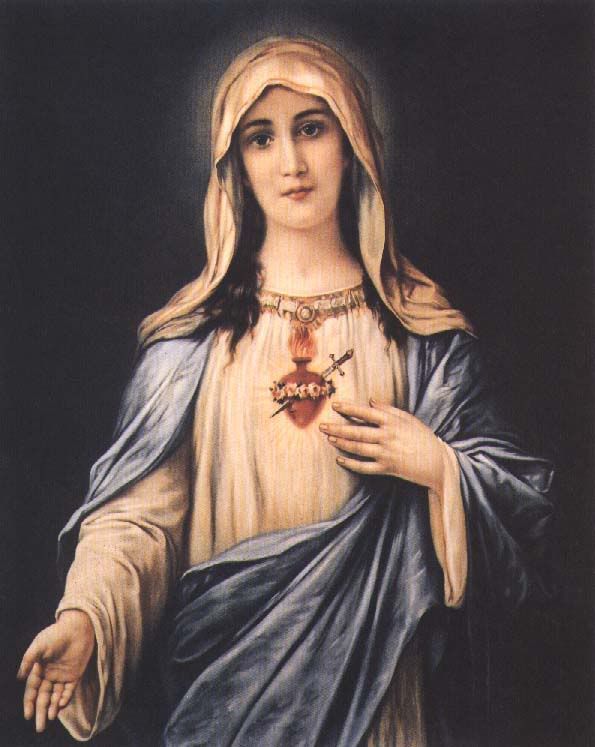Saturday, November 29, 2003
"Old Boys Have Their Playthings As Well....The Difference Is Only In the Price"
I wanted to blog on this topic before Christmas, so that it might help some folks with gift suggestions for husbands, sons, and nephews. The topic interests me, and I know something about it. Experienced blog readers will know that the phrase "the topic interests me" is the last word on whether the topic will be discussed in that blog.
First of all, one must overcome the reflexive pacifist response: war toys are bad. So we should give our sons Barbies so they can grow up to be...? Actually, toy soldiers give structure to aggressive play natural in boys. And do not doubt that aggressive play is natural for boys. Give them Barbies, and they will use them as clubs.
Toy soldiers can be used to teach about history, and the realities of war. There are other ways to learn that, too. When I was a young fella, there was a magazine about the Second World War published in 96 weekly parts with historical commentary, maps, and photos. I had about 40 issues of it. One photo I remember rather well. It was captioned, "The Pity of War." After looking at it for a while, I figured out that it was a color photo of a German infantryman who had been run over by more than one tank, and fairly well flattened into the mud. He may even have been run over by German tanks, not the enemy's. Disgust. Horror. Pity. Sorrow. No glory there. But it happens in war.
War itself is an unpleasant reality. But it is a reality. It is a reality that will never disappear in our lifetime. There is, and will be, no shortage of vicious national and super-national dragons to slay so that free men can live in peace and prosperity. So developing an understanding of how war works is healthy. It is natural for boys. Much better that aggressive instincts be exercised in miniature battles with lead or plastic soldiers than in cruelty to small animals or getting into fights.
But I'm not really interested in the toy soldiers you can buy in any supermarket in a plastic bag. Those are mostly terrible. They don't portray soldiers accurately. The accessories that sometimes come with them are usually not to scale and pretty cheesy. They are cheap, so if that is all you can afford to give, don't be ashamed of it. But there are better things on the market for those who can afford it.
The military miniature (in both plastic and lead) has really taken off over the last 10 years. The range of figures available is extremely impressive. The quality of the depictions has become extremely good since the poor samples available in my childhood. The availablity of paints and painting guides to complete unfinished figures is also impressive. The number of printed guide books that tell you how to design a diorama, how to paint a figure, how to apply camouflage to a tank, how to build terrain and accessories has multiplied. And the Internet has made it possible to find the very best and not be limited to the stock at your local hobby shop or toy store.
When I was a child in the late 1960s and early 1970s, Marx was the big name in toy soldiers. You could buy Marx playsets through the Sears catalog. They had World War II figures, American Revolution, American Civil War, and cowboys and Indians. The biggest range Marx had was in the World War II series, with two ranges of GIs (one oriented to the Pacific Theater, one for the European Theater) a set of Germans, a set of Japanese, a set of British 8th Army, a set of Free French. In the playsets there were tanks (whose scale never matched the soliders), jeeps (ditto) ruined buildings in plastic, plastic bunkers, plastic trees, plastic barbed wire, plastic stone walls, plastic cannons, and sometimes tin houses or forts. I remember that in the Fort Apache set, the Fort itself folded up into a tin briefcase that could hold the cavalry, cowboys, and Indians for storage.
The Marx figures were all 2 inches high (called 1/32nd scale or 54mm). As one got older, the toy soldiers could be supplemented by model kits, which would be more authentic looking. Monogram had a series of 1/32nd scale tanks based on the American Sherman chassis, and the German Panzer IV chassis.
But a funny thing happened to the toy soldier market when I was a kid. That thing was the backlash against the Vietnam War. The prestige of the US military declined because President Johnson wouldn't allow the military to win the war, but only to respond to North Vietnamese aggression. Protest at home fueled a pre-existing pacifist movement. Suddenly, toy soldiers were no longer popular. They disappeared from toy store shelves. Sears no longer carried Marx playsets. Hobby shops started to specialize in racing cars, and model railroads, so as not to offend leftists. When the Dungeons and Dragons craze hit in the early 1980s, hobby stores shifted gears again. Monogram folded up its tank model series. Marx practically went out of business. Airfix, which produced sets of smaller soldiers (HO scale or 1/72nd) also virtually folded. The military model market was for a long time dominated by MRC Tamiya, which produced models in the slightly smaller 1/35th scale.
If you wanted any type of quality in toy soldiers, Imrie-Risley, which flourished at the time of the Bicentennial as it specializes mostly in American Revolution figures, was one of the few outlets remaining. And Imrie-Risley produced (produces) figures in 1/32nd scale lead. At $10 per figure, unpainted (they were a little cheaper 15 years ago, but not much). And Imrie-Risley figures could only be found at hobby shops that specialized in military items, which in 1987, despite President Reagan, Grenada, and Libya, were few and far between.
The toys stores? Some low-quality toy soldiers returned to the toy store shelves then, but they really were not worth the money. This is the time when GI Joe, after a lengthy absence, resurfaced as a four-inch action figure devoted to fighting various super-villains.
But toy soldiers have a long history and were bound to make a come back eventually. They were buried with Chinese emperors in life-size terra cotta. British kids of the 19th century had their Britains. They first made their appearance in North America in the 1760s (remember the ones Mel Gibson melted into musket balls in The Patriot?). Tinker Toys were popular in the 1950s. Despite all the fury of war in Europe in the 20th century, toy soldiers there flourished. It was inevitable that they would re-infiltrate the American market. Starting a little over 10 years ago, they came back in a big way.
Hollywood, and the Persian Gulf War, as well as the 50th anniversary of World War II, all played a part in the resurgence. Movies like April Morning, Last of the Mohicans, The Patriot, The Crossing, Ken Burns' The Civil War, Gettysburg, and Saving Private Ryan stopped portraying the soldier as psychopath. Americans have been proud of how the US Armed Services have done their job since Desert Storm.
We have also remembered the brave men who stormed ashore at Anzio, Tarawa, Iwo Jima, and Omaha and Utah Beaches, who stopped the Germans at the Battle of the Bulge, and ended Nazism and Japanese militarism. Fiftieth anniversaries have a way of bringing back to mind the necessity of feats of arms.
British companies producing figures under names like Call To Arms and Accurate began in 1/32nd scale with uncontroversial topics like the American Revolution, the English Civil War, and the American Civil War. Then, after the movie The Last of the Mohicans, an American company called Barzso started to produce excellent 1/32nd scale plastic French and Indian War figures.
In England, Britains re-examined its concentration on glossy modern ceremonial poses, and produced American Civil War, American Revolution, and some World War II figures, of excellent quality and painted expertly. These figures are fairly expensive, about $15-20 each.
A European company called Hat has taken over the 1/72nd scale Napoleonic soldiers previously dominated by Airfix, and has greatly expanded the range. For $7.00 you can buy a box of 50 Hat figures. And what a range! British light infantry, highlanders, Guards, 95th Rifles, line infantry, light dragoons, hussars, the KGL, Scots Greys, Life Guards, Horse Artillery, Royal Artillery are all available. And that is just the British Army: the French have an even greater variety. And armies like the Russians, Prussians, Austrians, and Bavarians are also available. Even the weak Dutch-Belgian army that fought under Wellington at Waterloo is well-represented. But the smaller the figure, the more difficult it is to paint.
Then a few years ago, more companies joined the market. Conte produces a range of 1/32nd scale figures in either hand-painted lead (for collectors) or plastic, based on popular movies. The Longest Day is by far the most prolific series Conte has been working on. But Beau Geste, The War Lord, Zulu, The Vikings, and The Patriot are also represented in an ever-expanding line. And Conte does not just produce soldiers. They produce terrain and buildings to complement the figures, to scale,a nd fairly authentic looking. You can buy bridges, hedgerows, partially destroyed buildings, and other accessories.
Conte has even brought back the playset with its Zulu and The Longest Day playsets that include figures, some vehicles and terrain accessories. Let me tell you, these accessories are a far cry from the cheesy stuff of the 1970s. No molded plastic kelly green trees. The figures are so well done, so accurate and so detailed that one is ashamed to bring out one's old Marx figures and put them beside the new Conte figures. The hand-painted lead versions are truly excellent.
But wait. The toy soldier market has yet more new riches to explore. 21st Century Toys has produced 1/32nd scale World War II tanks, vehicles, and figures that go perfectly with Conte's. The first items in the series were American infantry and German infantry, along with the American Stuart tank, and Hellcat tank destroyer, as well as the German Tiger I tank, German half-track, and German armoured recon car. Based on the success of there first items, a whole new series made it to stores just in time for last Christmas (they were in my favorite hobby shop in Malden, Ma, the Hobby Bunker, about four days before Christmas; later than planned because of the West Coast dock strike; yes, they are made in China).
New excellent and affordable 1/32nd scale completed models of the Sherman, and Chafee tanks, the White half-track, the Mustang fighter, and the German Panther and Mark III, as well as the STUG III Jagdpanzer and Me 109 can be bought through hobby shops now. Fifteen dollars for a good finished 1/32nd scale model is an excellent price.
21st Century Toys also produce a line of 12-inch action figures based on World War II, Vietnam, Desert Storm, and police and fire. To work with the 12-inch action figures, there are even a few tanks. I salivated over the Stuart M-5 in 1/9th scale, but sadly concluded that $130.00 was more than I wanted to spend for something I had no room to store (it takes an entire table top). And the company has just come out with a $100 playset of 1/32nd scale figues, buildings, terrain, and tanks, though the selection seems to be weighted towards the Germans rather badly.
Other new companies like King and Country produce excellent hand-painted lead figures in slightly bigger than 1/32nd scale (60mm). Imrie-Risley is still producing excellent lead American Revolution figures. Meanwhile tabletop wargamers favor 1/72nd scale lead figures, and even smaller. There is plenty on the market to suit their needs.
When I shop at the Hobby Bunker, I don't see kids shopping. Even though Toys R Us carries some of the 21st Century Toys' line, I'll bet you that the buyers there are not kids either.
Some are being bought for kids. We bought our nephew a Hellcat for Christmas in 2001, and a Tiger last year. An extensive set of toy soldiers and accesories is just about the best gift a father can give a son on Christmas morning (it will keep both busy while Mom fixes dinner).
The people who are buying these items are guys 30 and older. Some are collectors like me. Some are just buying a bit of nostalgia (though the stuff on the market now is vastly superior to the toy soldiers and models on the market in the 1960s and 1970s). The deacon who runs the Archdiocese of Boston's cemetery system is a fifty-something who collects the old Marx sets. I know librarians, MBTA train operators, accountants, investment bankers, lawyers, and journalists who collect or wargame. Some of this is carry-over from re-enacting. Guys who, in the fine weather, don a uniform and shoulder a musket are disproportionately inclined to collect, paint, and game with military miniatures in the winter.
Which brings me to the catalyst for some of this explosion: the Internet. What kind of blog essay would it be if I didn't provide links? Some of these companies sell only to retailers on line (21st Century) but others happily take orders and display their entire stock on the internet. In response, some hobby shops, like the Hobby Bunker and the Michigan Toy Soldier Company offer you one-stop internet shopping, in a bewildering variety of scales, time periods, materials, and suppliers.
The websites vary in quality. 21st Century Toys seems to not have someone on the payroll to keep the website updated. Conte's site also sometimes is behind the product, but has recently improved. Barzso has a good site. Imrie-Risley has a very useful site, though they could stand to update their line a bit, (and some of their molds seem to be deteriorating with age). The British company King & Country has an excellent selection of painted lead figures, and a good website. Hat's is very good, and even has links to hundreds of photos of painted figures they (and other companies) produced. One new entrant in the market in the last year has been Forces of Valor, with a very detailed and realistic painted 1/32nd WWII ETO line, including weathered Shermans, Tiger I & II, jeeps, and figures. And of course, there is still W. Britains, with a greatly expanded line, including figures that are not so glossy as the classic Britains. Michigan Toy Soldier Company's site is truly excellent. You can find out what Conte and 21st Century are coming out with by regularly checking this site. Sometimes, they are ahead of the manufacturers' sites. They let you know about upcoming releases sometimes months before they hit the stores. The Hobby Bunker has an extensive site that should be updated more often (but since their brick and mortar facility is nearby, I stop in every few weeks).
Trees and othe accessories can be bought through Doll Houses, Trains, and More, which carries Lemax trees originally designed for Christmas villages, but also perfect for model railroads and military dioramas (last year I built a walled 18th century apple orchard with their trees, a piece of plywood, landscaping stones, super glue, and the shredded colored foam used by model railroaders, blended for the right color for grass in Eastern Massachusetts in April).
So go on. Buy that special guy in your life something he will really enjoy for Christmas. If he is at all interested in military things, you don't have to stop at computer games. There is a great advantage in having something tangible to play with.
Update: Walmart will now be carrying the latest 21st Century Toys 32x line vehicles. They have the weathered Sherman and Panther G. See the 21st Century Toys site for details.
First of all, one must overcome the reflexive pacifist response: war toys are bad. So we should give our sons Barbies so they can grow up to be...? Actually, toy soldiers give structure to aggressive play natural in boys. And do not doubt that aggressive play is natural for boys. Give them Barbies, and they will use them as clubs.
Toy soldiers can be used to teach about history, and the realities of war. There are other ways to learn that, too. When I was a young fella, there was a magazine about the Second World War published in 96 weekly parts with historical commentary, maps, and photos. I had about 40 issues of it. One photo I remember rather well. It was captioned, "The Pity of War." After looking at it for a while, I figured out that it was a color photo of a German infantryman who had been run over by more than one tank, and fairly well flattened into the mud. He may even have been run over by German tanks, not the enemy's. Disgust. Horror. Pity. Sorrow. No glory there. But it happens in war.
War itself is an unpleasant reality. But it is a reality. It is a reality that will never disappear in our lifetime. There is, and will be, no shortage of vicious national and super-national dragons to slay so that free men can live in peace and prosperity. So developing an understanding of how war works is healthy. It is natural for boys. Much better that aggressive instincts be exercised in miniature battles with lead or plastic soldiers than in cruelty to small animals or getting into fights.
But I'm not really interested in the toy soldiers you can buy in any supermarket in a plastic bag. Those are mostly terrible. They don't portray soldiers accurately. The accessories that sometimes come with them are usually not to scale and pretty cheesy. They are cheap, so if that is all you can afford to give, don't be ashamed of it. But there are better things on the market for those who can afford it.
The military miniature (in both plastic and lead) has really taken off over the last 10 years. The range of figures available is extremely impressive. The quality of the depictions has become extremely good since the poor samples available in my childhood. The availablity of paints and painting guides to complete unfinished figures is also impressive. The number of printed guide books that tell you how to design a diorama, how to paint a figure, how to apply camouflage to a tank, how to build terrain and accessories has multiplied. And the Internet has made it possible to find the very best and not be limited to the stock at your local hobby shop or toy store.
When I was a child in the late 1960s and early 1970s, Marx was the big name in toy soldiers. You could buy Marx playsets through the Sears catalog. They had World War II figures, American Revolution, American Civil War, and cowboys and Indians. The biggest range Marx had was in the World War II series, with two ranges of GIs (one oriented to the Pacific Theater, one for the European Theater) a set of Germans, a set of Japanese, a set of British 8th Army, a set of Free French. In the playsets there were tanks (whose scale never matched the soliders), jeeps (ditto) ruined buildings in plastic, plastic bunkers, plastic trees, plastic barbed wire, plastic stone walls, plastic cannons, and sometimes tin houses or forts. I remember that in the Fort Apache set, the Fort itself folded up into a tin briefcase that could hold the cavalry, cowboys, and Indians for storage.
The Marx figures were all 2 inches high (called 1/32nd scale or 54mm). As one got older, the toy soldiers could be supplemented by model kits, which would be more authentic looking. Monogram had a series of 1/32nd scale tanks based on the American Sherman chassis, and the German Panzer IV chassis.
But a funny thing happened to the toy soldier market when I was a kid. That thing was the backlash against the Vietnam War. The prestige of the US military declined because President Johnson wouldn't allow the military to win the war, but only to respond to North Vietnamese aggression. Protest at home fueled a pre-existing pacifist movement. Suddenly, toy soldiers were no longer popular. They disappeared from toy store shelves. Sears no longer carried Marx playsets. Hobby shops started to specialize in racing cars, and model railroads, so as not to offend leftists. When the Dungeons and Dragons craze hit in the early 1980s, hobby stores shifted gears again. Monogram folded up its tank model series. Marx practically went out of business. Airfix, which produced sets of smaller soldiers (HO scale or 1/72nd) also virtually folded. The military model market was for a long time dominated by MRC Tamiya, which produced models in the slightly smaller 1/35th scale.
If you wanted any type of quality in toy soldiers, Imrie-Risley, which flourished at the time of the Bicentennial as it specializes mostly in American Revolution figures, was one of the few outlets remaining. And Imrie-Risley produced (produces) figures in 1/32nd scale lead. At $10 per figure, unpainted (they were a little cheaper 15 years ago, but not much). And Imrie-Risley figures could only be found at hobby shops that specialized in military items, which in 1987, despite President Reagan, Grenada, and Libya, were few and far between.
The toys stores? Some low-quality toy soldiers returned to the toy store shelves then, but they really were not worth the money. This is the time when GI Joe, after a lengthy absence, resurfaced as a four-inch action figure devoted to fighting various super-villains.
But toy soldiers have a long history and were bound to make a come back eventually. They were buried with Chinese emperors in life-size terra cotta. British kids of the 19th century had their Britains. They first made their appearance in North America in the 1760s (remember the ones Mel Gibson melted into musket balls in The Patriot?). Tinker Toys were popular in the 1950s. Despite all the fury of war in Europe in the 20th century, toy soldiers there flourished. It was inevitable that they would re-infiltrate the American market. Starting a little over 10 years ago, they came back in a big way.
Hollywood, and the Persian Gulf War, as well as the 50th anniversary of World War II, all played a part in the resurgence. Movies like April Morning, Last of the Mohicans, The Patriot, The Crossing, Ken Burns' The Civil War, Gettysburg, and Saving Private Ryan stopped portraying the soldier as psychopath. Americans have been proud of how the US Armed Services have done their job since Desert Storm.
We have also remembered the brave men who stormed ashore at Anzio, Tarawa, Iwo Jima, and Omaha and Utah Beaches, who stopped the Germans at the Battle of the Bulge, and ended Nazism and Japanese militarism. Fiftieth anniversaries have a way of bringing back to mind the necessity of feats of arms.
British companies producing figures under names like Call To Arms and Accurate began in 1/32nd scale with uncontroversial topics like the American Revolution, the English Civil War, and the American Civil War. Then, after the movie The Last of the Mohicans, an American company called Barzso started to produce excellent 1/32nd scale plastic French and Indian War figures.
In England, Britains re-examined its concentration on glossy modern ceremonial poses, and produced American Civil War, American Revolution, and some World War II figures, of excellent quality and painted expertly. These figures are fairly expensive, about $15-20 each.
A European company called Hat has taken over the 1/72nd scale Napoleonic soldiers previously dominated by Airfix, and has greatly expanded the range. For $7.00 you can buy a box of 50 Hat figures. And what a range! British light infantry, highlanders, Guards, 95th Rifles, line infantry, light dragoons, hussars, the KGL, Scots Greys, Life Guards, Horse Artillery, Royal Artillery are all available. And that is just the British Army: the French have an even greater variety. And armies like the Russians, Prussians, Austrians, and Bavarians are also available. Even the weak Dutch-Belgian army that fought under Wellington at Waterloo is well-represented. But the smaller the figure, the more difficult it is to paint.
Then a few years ago, more companies joined the market. Conte produces a range of 1/32nd scale figures in either hand-painted lead (for collectors) or plastic, based on popular movies. The Longest Day is by far the most prolific series Conte has been working on. But Beau Geste, The War Lord, Zulu, The Vikings, and The Patriot are also represented in an ever-expanding line. And Conte does not just produce soldiers. They produce terrain and buildings to complement the figures, to scale,a nd fairly authentic looking. You can buy bridges, hedgerows, partially destroyed buildings, and other accessories.
Conte has even brought back the playset with its Zulu and The Longest Day playsets that include figures, some vehicles and terrain accessories. Let me tell you, these accessories are a far cry from the cheesy stuff of the 1970s. No molded plastic kelly green trees. The figures are so well done, so accurate and so detailed that one is ashamed to bring out one's old Marx figures and put them beside the new Conte figures. The hand-painted lead versions are truly excellent.
But wait. The toy soldier market has yet more new riches to explore. 21st Century Toys has produced 1/32nd scale World War II tanks, vehicles, and figures that go perfectly with Conte's. The first items in the series were American infantry and German infantry, along with the American Stuart tank, and Hellcat tank destroyer, as well as the German Tiger I tank, German half-track, and German armoured recon car. Based on the success of there first items, a whole new series made it to stores just in time for last Christmas (they were in my favorite hobby shop in Malden, Ma, the Hobby Bunker, about four days before Christmas; later than planned because of the West Coast dock strike; yes, they are made in China).
New excellent and affordable 1/32nd scale completed models of the Sherman, and Chafee tanks, the White half-track, the Mustang fighter, and the German Panther and Mark III, as well as the STUG III Jagdpanzer and Me 109 can be bought through hobby shops now. Fifteen dollars for a good finished 1/32nd scale model is an excellent price.
21st Century Toys also produce a line of 12-inch action figures based on World War II, Vietnam, Desert Storm, and police and fire. To work with the 12-inch action figures, there are even a few tanks. I salivated over the Stuart M-5 in 1/9th scale, but sadly concluded that $130.00 was more than I wanted to spend for something I had no room to store (it takes an entire table top). And the company has just come out with a $100 playset of 1/32nd scale figues, buildings, terrain, and tanks, though the selection seems to be weighted towards the Germans rather badly.
Other new companies like King and Country produce excellent hand-painted lead figures in slightly bigger than 1/32nd scale (60mm). Imrie-Risley is still producing excellent lead American Revolution figures. Meanwhile tabletop wargamers favor 1/72nd scale lead figures, and even smaller. There is plenty on the market to suit their needs.
When I shop at the Hobby Bunker, I don't see kids shopping. Even though Toys R Us carries some of the 21st Century Toys' line, I'll bet you that the buyers there are not kids either.
Some are being bought for kids. We bought our nephew a Hellcat for Christmas in 2001, and a Tiger last year. An extensive set of toy soldiers and accesories is just about the best gift a father can give a son on Christmas morning (it will keep both busy while Mom fixes dinner).
The people who are buying these items are guys 30 and older. Some are collectors like me. Some are just buying a bit of nostalgia (though the stuff on the market now is vastly superior to the toy soldiers and models on the market in the 1960s and 1970s). The deacon who runs the Archdiocese of Boston's cemetery system is a fifty-something who collects the old Marx sets. I know librarians, MBTA train operators, accountants, investment bankers, lawyers, and journalists who collect or wargame. Some of this is carry-over from re-enacting. Guys who, in the fine weather, don a uniform and shoulder a musket are disproportionately inclined to collect, paint, and game with military miniatures in the winter.
Which brings me to the catalyst for some of this explosion: the Internet. What kind of blog essay would it be if I didn't provide links? Some of these companies sell only to retailers on line (21st Century) but others happily take orders and display their entire stock on the internet. In response, some hobby shops, like the Hobby Bunker and the Michigan Toy Soldier Company offer you one-stop internet shopping, in a bewildering variety of scales, time periods, materials, and suppliers.
The websites vary in quality. 21st Century Toys seems to not have someone on the payroll to keep the website updated. Conte's site also sometimes is behind the product, but has recently improved. Barzso has a good site. Imrie-Risley has a very useful site, though they could stand to update their line a bit, (and some of their molds seem to be deteriorating with age). The British company King & Country has an excellent selection of painted lead figures, and a good website. Hat's is very good, and even has links to hundreds of photos of painted figures they (and other companies) produced. One new entrant in the market in the last year has been Forces of Valor, with a very detailed and realistic painted 1/32nd WWII ETO line, including weathered Shermans, Tiger I & II, jeeps, and figures. And of course, there is still W. Britains, with a greatly expanded line, including figures that are not so glossy as the classic Britains. Michigan Toy Soldier Company's site is truly excellent. You can find out what Conte and 21st Century are coming out with by regularly checking this site. Sometimes, they are ahead of the manufacturers' sites. They let you know about upcoming releases sometimes months before they hit the stores. The Hobby Bunker has an extensive site that should be updated more often (but since their brick and mortar facility is nearby, I stop in every few weeks).
Trees and othe accessories can be bought through Doll Houses, Trains, and More, which carries Lemax trees originally designed for Christmas villages, but also perfect for model railroads and military dioramas (last year I built a walled 18th century apple orchard with their trees, a piece of plywood, landscaping stones, super glue, and the shredded colored foam used by model railroaders, blended for the right color for grass in Eastern Massachusetts in April).
So go on. Buy that special guy in your life something he will really enjoy for Christmas. If he is at all interested in military things, you don't have to stop at computer games. There is a great advantage in having something tangible to play with.
Update: Walmart will now be carrying the latest 21st Century Toys 32x line vehicles. They have the weathered Sherman and Panther G. See the 21st Century Toys site for details.
Friday, November 28, 2003
If You Are Thinking About Christmas Gifts...
The Girl I Left Behind Me
A wonderful 18th century English song that can be sung around a campfire, marched to, or just hummed or whistled when one is in the mood for it, as I have been lately. The Irish use the tune for a drinking song called "Waxies Dargle."
I'm lonesome since I crossed the hill,
And o'er the moorland sedgy
Such heavy thoughts my heart do fill,
Since parting with my Betsey
I seek no more the fair and gay,
For such things just remind me
How sweet the hours I passed away,
With the girl I left behind me.
O ne'er shall I foget the night,
The stars were bright above me
And gently lent their silv'ry light
when first she vowed to love me
But now I'm bound to Brighton camp
Kind heaven then pray guide me
And send me safely back again,
To the girl I left behind me
Her chestnut hair in ringlets fair,
Her eyes like diamonds shining
Her lovely waist, her heavenly face,
That leaves my heart still pining
Ye gods above, oh hear my prayer
To my beauteous fair to find me
And send me safely back again,
To the girl I left behind me
The bee shall honey taste no more,
The dove become a ranger
The falling waters cease to roar,
Ere I shall seek to change her
The vows we made to heav'n above
Shall ever cheer and bind me
In constancy to her I love,
The girl I left behind me.
You can listen to it in midi format here.
The Comtemplator (Contemplations From the Marianas Trench) is a wonderful site to explore, if you like British Isles folk music, and don't mind midi format. It often provides a useful history for the song in question.
There are many missing songs that should be added, and I noticed that they did not pick up on the fact that the tune for When the King Enjoys His Own Again is the same as An English Country Garden. But a great site nonetheless.
I'm lonesome since I crossed the hill,
And o'er the moorland sedgy
Such heavy thoughts my heart do fill,
Since parting with my Betsey
I seek no more the fair and gay,
For such things just remind me
How sweet the hours I passed away,
With the girl I left behind me.
O ne'er shall I foget the night,
The stars were bright above me
And gently lent their silv'ry light
when first she vowed to love me
But now I'm bound to Brighton camp
Kind heaven then pray guide me
And send me safely back again,
To the girl I left behind me
Her chestnut hair in ringlets fair,
Her eyes like diamonds shining
Her lovely waist, her heavenly face,
That leaves my heart still pining
Ye gods above, oh hear my prayer
To my beauteous fair to find me
And send me safely back again,
To the girl I left behind me
The bee shall honey taste no more,
The dove become a ranger
The falling waters cease to roar,
Ere I shall seek to change her
The vows we made to heav'n above
Shall ever cheer and bind me
In constancy to her I love,
The girl I left behind me.
You can listen to it in midi format here.
The Comtemplator (Contemplations From the Marianas Trench) is a wonderful site to explore, if you like British Isles folk music, and don't mind midi format. It often provides a useful history for the song in question.
There are many missing songs that should be added, and I noticed that they did not pick up on the fact that the tune for When the King Enjoys His Own Again is the same as An English Country Garden. But a great site nonetheless.
Too Cool For Words
Right on Mr. President!
Wednesday, November 26, 2003
Happy Thanksgiving
I'm outa here until Friday. May all enjoy their Thanksgiving. Eat too much turkey and pumpkin pie, and save some white meat for me!
Dale Price Does It Again
If You Have A Little Time On Your Hands On This Semi-Holiday
While Buying That Holiday Produce...
Watch out for Black Widow spiders in your bunch of grapes, especially if you buy your produce at a Shaw's in Massachusetts. A Boylston woman found one in hers last week.
The First Thanksgiving: Two Primary Accounts
The first is from Governor William Bradford's history of the Plymouth Colony. The second is from Mort's Relation.
"They begane now to gather in ye small harvest they had, and to fitte up their houses and dwellings against winter, being well recovered in health & strenght, and had all things in good plenty; for some were thus imployed in affairs abroad, others were excersised in fishing, aboute codd, & bass, & other fish, of which yey tooke good store, of which every family had their portion. All ye somer ther was no wante. And now begane to come in store of foule, as winter aproached, of which this place did abound when they came first (but afterward decreased by degree). And besids water foule, ther was great store of wild Turkies, of which they took many, besids venison, &c. Besids they had aboute a peck a meale a weeke to a person, or now since harvest, Indean corne to yt proportion. Which made many afterwards write so largly of their plenty hear to their freinds in England, which were not fained, but true reports."
William Bradford. "Bradford's History "Of Plimoth Plantation." Boston: Wright & Potter Printing Co., State Printers... 1898. p. 127
"Our Corne did proue well, & God be praysed, we had a good increase of Indian Corne, and our Barly indifferent good, but our Pease not worth the gathering, for we feared they were too late sowne, they came vp very well, and blossomed, but the Sunne parched them in the blossome; our harvest being gotten in, our Governour sent foure men on fowling, that so we might after a more speciall manner reioyce together, after we had gathered the fruit of our labors; they foure in one day killed as much fowle, as with a little helpe beside, served the Company almost a weeke, at which time amongst other Recreations, we exercised our Armes, many of the Indians coming amongst vs, and among the rest their greatest King Massasoyt, with some nintie men, whom for three dayes we entertained and feasted, and they went out and killed fiue Deere, which they brought to the Plantation and bestowed upon our Governour, and upon the Captaine, and others. And although it be not alwayes so plentifull, as it was at this time with vs, yet by the goodneses of God, we are so farre from want, that we often wish you partakers of our plenty."
E.W., Plymouth, in New England, this 11th of December, 1621. in A RELATION OR Journal of the beginning and proceedings of the English Plantation settled at Plimoth in NEW ENGLAND, by certaine English Aduenturers both Merchants and others. LONDON,Printed for John Bellamie,..1622. pp. 60-61.
"They begane now to gather in ye small harvest they had, and to fitte up their houses and dwellings against winter, being well recovered in health & strenght, and had all things in good plenty; for some were thus imployed in affairs abroad, others were excersised in fishing, aboute codd, & bass, & other fish, of which yey tooke good store, of which every family had their portion. All ye somer ther was no wante. And now begane to come in store of foule, as winter aproached, of which this place did abound when they came first (but afterward decreased by degree). And besids water foule, ther was great store of wild Turkies, of which they took many, besids venison, &c. Besids they had aboute a peck a meale a weeke to a person, or now since harvest, Indean corne to yt proportion. Which made many afterwards write so largly of their plenty hear to their freinds in England, which were not fained, but true reports."
William Bradford. "Bradford's History "Of Plimoth Plantation." Boston: Wright & Potter Printing Co., State Printers... 1898. p. 127
"Our Corne did proue well, & God be praysed, we had a good increase of Indian Corne, and our Barly indifferent good, but our Pease not worth the gathering, for we feared they were too late sowne, they came vp very well, and blossomed, but the Sunne parched them in the blossome; our harvest being gotten in, our Governour sent foure men on fowling, that so we might after a more speciall manner reioyce together, after we had gathered the fruit of our labors; they foure in one day killed as much fowle, as with a little helpe beside, served the Company almost a weeke, at which time amongst other Recreations, we exercised our Armes, many of the Indians coming amongst vs, and among the rest their greatest King Massasoyt, with some nintie men, whom for three dayes we entertained and feasted, and they went out and killed fiue Deere, which they brought to the Plantation and bestowed upon our Governour, and upon the Captaine, and others. And although it be not alwayes so plentifull, as it was at this time with vs, yet by the goodneses of God, we are so farre from want, that we often wish you partakers of our plenty."
E.W., Plymouth, in New England, this 11th of December, 1621. in A RELATION OR Journal of the beginning and proceedings of the English Plantation settled at Plimoth in NEW ENGLAND, by certaine English Aduenturers both Merchants and others. LONDON,Printed for John Bellamie,..1622. pp. 60-61.
The Selkirk Grace
Some hae meat and canna eat,
And some wad eat that want it,
But we hae meat and we can eat,
And so the Lord be thanket.
And some wad eat that want it,
But we hae meat and we can eat,
And so the Lord be thanket.
The Catholic Encyclopedia On Grace Before Meals
In Honor of the Biggest Travel Day of the Year
Over the river and through the wood
To Grandfather's house we go.
The horse knows the way
To carry the sleigh
Through white and drifted snow.
Over the river and through the wood --
Oh, how the wind does blow!
It stings the toes
And bites the nose,
As over the ground we go.
Over the river and through the wood
To have a first-rate play.
Hear the bells ring,
Ting-a-ling-ling!
Hurrah forThanksgiving Day!
Over the river and through the wood,
Trot fast, my dapple gray!
Spring over the ground
Like a hunting hound,
For this is Thanksgiving Day.
Over the river and through the wood,
And straight through the barnyard gate.
We seem to go
Extremely slow --
It is so hard to wait!
Over the river and through the wood --
Now Grandmother's cap I spy!
Hurrah for fun!
Is the pudding done?
Hurrah for the pumpkin pie!
To Grandfather's house we go.
The horse knows the way
To carry the sleigh
Through white and drifted snow.
Over the river and through the wood --
Oh, how the wind does blow!
It stings the toes
And bites the nose,
As over the ground we go.
Over the river and through the wood
To have a first-rate play.
Hear the bells ring,
Ting-a-ling-ling!
Hurrah forThanksgiving Day!
Over the river and through the wood,
Trot fast, my dapple gray!
Spring over the ground
Like a hunting hound,
For this is Thanksgiving Day.
Over the river and through the wood,
And straight through the barnyard gate.
We seem to go
Extremely slow --
It is so hard to wait!
Over the river and through the wood --
Now Grandmother's cap I spy!
Hurrah for fun!
Is the pudding done?
Hurrah for the pumpkin pie!
Psalm 66/67
A Psalm of Thanksgiving
May God have mercy on us, and bless us: may He cause the light of His countenance to shine upon us, and may He have mercy on us.
That we may know Thy way upon earth: Thy salvation in all nations.
Let people confess to Thee, O God: let all people give praise to Thee.
Let the nations be glad and rejoice: for Thou judgest the people with justice, and directest the nations upon earth.
Let the people, O God, confess to Thee: let all the people give praise to Thee:
The earth hath yielded her fruit. May God, our God bless us,
May God bless us: and all the ends of the earth fear Him.
May God have mercy on us, and bless us: may He cause the light of His countenance to shine upon us, and may He have mercy on us.
That we may know Thy way upon earth: Thy salvation in all nations.
Let people confess to Thee, O God: let all people give praise to Thee.
Let the nations be glad and rejoice: for Thou judgest the people with justice, and directest the nations upon earth.
Let the people, O God, confess to Thee: let all the people give praise to Thee:
The earth hath yielded her fruit. May God, our God bless us,
May God bless us: and all the ends of the earth fear Him.
Come, Ye Thankful People Come
A wonderful Thaksgiving song I learned in grammar school. The tune is a well-known hymn used in Catholic churches, but I can't come up with the title. You can listen to it in Midi format here.
Come, ye thankful people, come, raise the song of harvest home;
All is safely gathered in, ere the winter storms begin.
God our Maker doth provide for our wants to be supplied;
Come to God’s own temple, come, raise the song of harvest home.
All the world is God’s own field, fruit unto His praise to yield;
Wheat and tares together sown unto joy or sorrow grown.
First the blade and then the ear, then the full corn shall appear;
Lord of harvest, grant that we wholesome grain and pure may be.
For the Lord our God shall come, and shall take His harvest home;
From His field shall in that day all offenses purge away,
Giving angels charge at last in the fire the tares to cast;
But the fruitful ears to store in His garner evermore.
Even so, Lord, quickly come, bring Thy final harvest home;
Gather Thou Thy people in, free from sorrow, free from sin,
There, forever purified, in Thy garner to abide;
Come, with all Thine angels come, raise the glorious harvest home.
Come, ye thankful people, come, raise the song of harvest home;
All is safely gathered in, ere the winter storms begin.
God our Maker doth provide for our wants to be supplied;
Come to God’s own temple, come, raise the song of harvest home.
All the world is God’s own field, fruit unto His praise to yield;
Wheat and tares together sown unto joy or sorrow grown.
First the blade and then the ear, then the full corn shall appear;
Lord of harvest, grant that we wholesome grain and pure may be.
For the Lord our God shall come, and shall take His harvest home;
From His field shall in that day all offenses purge away,
Giving angels charge at last in the fire the tares to cast;
But the fruitful ears to store in His garner evermore.
Even so, Lord, quickly come, bring Thy final harvest home;
Gather Thou Thy people in, free from sorrow, free from sin,
There, forever purified, in Thy garner to abide;
Come, with all Thine angels come, raise the glorious harvest home.
Psalm 141/142
The Seventh Penitential Psalm
This will conclude our month of concentration on sin, death judgment, Heaven, Hell and Purgatory that we have been undergoing since Hallowmas.
Advent starts on Sunday, and I would like to switch gears to discuss love, particularly Agape, undying unshakable love, love no matter what. It will be a learning experience for me, so don't expect anything too profound.
I cried to the Lord with my voice: with my voice I made supplication to the Lord.
In His sight I pour out my prayer, and before Him I declare my trouble:
When my spirit failed me, then Thou knewest my paths. In this way wherein I walked, they have hidden a snare for me.
I looked on my right hand, and beheld, and there was no one that would know me. Flight hath failed me: and there is no one that hath regard to my soul.
I cried to Thee, O Lord: I said: Thou art my hope, my portion in the land of the living.
Attend to my supplication: for I am brought very low. Deliver me from my persecutors; for they are stronger than I.
Bring my soul out of prison, that I may praise Thy name: the just wait for me, until Thou reward me.
The despair of the Psalmist is evident.
"I looked on my right hand, and beheld, and there was no one that would know me. Flight hath failed me: and there is no one that hath regard to my soul."
This line reminds me of an anecdote I read annually in a book of Lenten reflections titled, Repent: It's Lent.
A couple has had financial troubles for a long time. The wife has been out of work for over a year. Their credit cards are maxed out and cancelled. They are overdrawn at the bank. Their credit rating looks like Swiss cheese. They have no family or close friends. The company that the husband works for is having difficulty and is looking for an excuse to shed employees. He makes a minor mistake in his job and is fired for cause (no unemployment benefits). While he is cleaning out his desk, he gets an emergency phone call to rush home. When he gets there, he finds that his house is on fire, and that his wife, children, pets and everything he owns were inside and no one and nothing can be saved. There is no insurance. While he is in this state of shock, the repo man comes for his car, and summons are served for unpaid bills. He sobs on the shoulder of the Fire Chaplain, "I have nothing now but God."
That is essentially the predicament of the Psalmist. He turns to God for help in this extremity. He has no where else to go. God is the last resource for all of us. And He is a sure resource.
Despair not.
Ask, and you will receive. Seek, and you shall find. Knock, and the door will be opened.
And that reality is truly something to be thankful for.
This will conclude our month of concentration on sin, death judgment, Heaven, Hell and Purgatory that we have been undergoing since Hallowmas.
Advent starts on Sunday, and I would like to switch gears to discuss love, particularly Agape, undying unshakable love, love no matter what. It will be a learning experience for me, so don't expect anything too profound.
I cried to the Lord with my voice: with my voice I made supplication to the Lord.
In His sight I pour out my prayer, and before Him I declare my trouble:
When my spirit failed me, then Thou knewest my paths. In this way wherein I walked, they have hidden a snare for me.
I looked on my right hand, and beheld, and there was no one that would know me. Flight hath failed me: and there is no one that hath regard to my soul.
I cried to Thee, O Lord: I said: Thou art my hope, my portion in the land of the living.
Attend to my supplication: for I am brought very low. Deliver me from my persecutors; for they are stronger than I.
Bring my soul out of prison, that I may praise Thy name: the just wait for me, until Thou reward me.
The despair of the Psalmist is evident.
"I looked on my right hand, and beheld, and there was no one that would know me. Flight hath failed me: and there is no one that hath regard to my soul."
This line reminds me of an anecdote I read annually in a book of Lenten reflections titled, Repent: It's Lent.
A couple has had financial troubles for a long time. The wife has been out of work for over a year. Their credit cards are maxed out and cancelled. They are overdrawn at the bank. Their credit rating looks like Swiss cheese. They have no family or close friends. The company that the husband works for is having difficulty and is looking for an excuse to shed employees. He makes a minor mistake in his job and is fired for cause (no unemployment benefits). While he is cleaning out his desk, he gets an emergency phone call to rush home. When he gets there, he finds that his house is on fire, and that his wife, children, pets and everything he owns were inside and no one and nothing can be saved. There is no insurance. While he is in this state of shock, the repo man comes for his car, and summons are served for unpaid bills. He sobs on the shoulder of the Fire Chaplain, "I have nothing now but God."
That is essentially the predicament of the Psalmist. He turns to God for help in this extremity. He has no where else to go. God is the last resource for all of us. And He is a sure resource.
Despair not.
Ask, and you will receive. Seek, and you shall find. Knock, and the door will be opened.
And that reality is truly something to be thankful for.
Blogging Notice
No blogging tomorrow. Today is almost on auto-pilot, with a fair amount of archived material, or Thanksgiving-themed items from various parts of the Internet. Friday I may have something original, or perhaps Saturday.
A Thanksgiving Wish
I would like to take this opportunity to wish all of my readers and loved ones a happy and joyous Thanksgiving. Even in tough times (and we are not quite out of the woods yet) and in war, we have much to be thankful for in this wonderful country. God bless you all.
A Thanksgiving Prayer
On this Thanksgivng Day, Lord, we Your people count our blessings, which You have given us. With joyful gratitutude, we raise our voices in praise of the Author of creation.
We thank You for the gifts of life, free will, and good health of both body and mind.
We thank You for the bountiful food we eat, the warm clothes we wear, the shelter of our homes, the love and comfort of our families.
We thank You for gainful and challenging employment.
We thank You for a free country, made prosperous by Your grace and the effective exercise of our free will.
We thank You for the rights to earn our bread, speak our minds, elect our leaders, choose our friends, protect our families, and worship You.
We thank You for those who make our freedom possible, EMTs, doctors and nurses, firemen, policemen, soldiers, airmen, sailors, marines, Coast Guardsmen, agents, analysts, and national leaders.
We thank You for the sacrifice of so many brave young men who have given the last full measure of devotion, and for all who have served, so that we may live free in this land You have provided for us.
We thank You for the gift of Faith which helps us to understand that we shall transcend all difficulties through Your grace.
We thank You for your Church here on earth, divided as it is, troubled by sin, beset by Satan, yet ultimately triumphant.
Most of all, Lord, we thank You for Your Sacrifice on Calvary, which opened the gates of Heaven to us, giving us the promise of eternal life.
We adore and thank You, Oh Christ, and we praise You, because by Your holy cross, You have redeemed the world.
We thank You for the gifts of life, free will, and good health of both body and mind.
We thank You for the bountiful food we eat, the warm clothes we wear, the shelter of our homes, the love and comfort of our families.
We thank You for gainful and challenging employment.
We thank You for a free country, made prosperous by Your grace and the effective exercise of our free will.
We thank You for the rights to earn our bread, speak our minds, elect our leaders, choose our friends, protect our families, and worship You.
We thank You for those who make our freedom possible, EMTs, doctors and nurses, firemen, policemen, soldiers, airmen, sailors, marines, Coast Guardsmen, agents, analysts, and national leaders.
We thank You for the sacrifice of so many brave young men who have given the last full measure of devotion, and for all who have served, so that we may live free in this land You have provided for us.
We thank You for the gift of Faith which helps us to understand that we shall transcend all difficulties through Your grace.
We thank You for your Church here on earth, divided as it is, troubled by sin, beset by Satan, yet ultimately triumphant.
Most of all, Lord, we thank You for Your Sacrifice on Calvary, which opened the gates of Heaven to us, giving us the promise of eternal life.
We adore and thank You, Oh Christ, and we praise You, because by Your holy cross, You have redeemed the world.
Tuesday, November 25, 2003
A Revolutionary War Thanksgiving: Long Blog Warning
The persistence of American Thanksgiving customs is impressive. While cranberry sauce and pumpkin pie may not have been on the menu at Plymouth in 1621, when venison and an unspecified "fowle"; graced the communal table, Americans have celebrated their unique holiday for giving thanks to God in ways that are highly recognizable from generation to generation, from century to century.
An excellent illustration of this is the Thanksgiving dinner described in her diary by Juliana Smith, the daughter of Massachusetts minister Reverend Smith in 1779. It is published nearly in full in We Gather Together, by Ralph and Adelin Linton, and published by Henry Schuman of New York in 1949 at pages 73-77.
This little-studied diary entry shows that the pattern for the American Thanksgiving celebration that people in the early 21st century continue to observe was in place even at the time of the nation's founding.
The dinner took place in the third year of the Revolutionary War, but reflects little wartime privation. Indeed for a country engaged in a great conflict to establish its independence, one is struck by the normality of the celebration. There is a prayer for absent friends, but one doubts that this prosperous family has supplied much in the way of cannon fodder for Washington's army. One son of military age is instead at college.
The Smith clan was a fairly prosperous one, but not great merchants. One of Juliana's uncles was a doctor, another an apparently prosperous farmer. Her father was the local Congregationalist minister.
Given the family's level of prosperity, it would be reasonable to question the typicality of their Thanksgiving feast. One must ask how representative their celebration is of their region and time. The participants in the Thanksgiving ritual we will closely observe all seem to be familiar with their expected roles, even when they do not come from the same household or class. So we can at least say that this mode of celebration was familiar to these people. But larger characterizations regarding typicality would require evidence outside the diary.
Such evidence does exist. It corroborates the contention that the Thanksgiving gathering described by Juliana Smith was indeed typical in its broad outlines, though perhaps more elaborate than most.
Miss Smith begins her description with some facets of the celebration that will be familiar to the modern householder. "This year, it was Uncle Simeon's turn to have the dinner at his house". So this family group, which by modern standards is rather large, is in the habit of rotating the responsibility for hosting the annual feast. This is a reasonable arrangement given the size and composition of the family group.
The titular heads of the family are the two grandmothers. Their children and their spouses, and their childrens' children form the core of the family group. In addition to them are neighbors, orphans, and stranded students, old people with no place else to celebrate the day, and servants.
Given such a large group, and the prosperity of at least two branches of the family, it would be entirely reasonable to share the responsibility for hosting this ritual gathering, not putting too much of the burden on any one branch year after year.
This custom speaks to the absence of any controlling pater familias, a Squire Bracebridge, if you like, who would not hear of Thanksgiving being celebrated anywhere but in the ancestral seat which he occupies. One wonders if this would be the case if one of Juliana Smith's grandfathers were still alive.
"All the baking of pies and cakes was done at our house & we had the big oven heated & filled twice each day for three days before it was all done". Yes, this is very familiar to moderns hosting a family gathering for Thanksgiving.
Food preparation is time-consuming. Then, without food processors, canned pumpkin, standardized measurements, a hundred utensils and conveniences, or pretty much unfailingly accurate and reliable ovens, it was more so. Three days seems reasonable for making all the pies for such a large gathering. Even today, with all the conveniences in the kitchen, a large meal like this needs to be started days in advance. The difference is in cold storage. There was no refrigeration per se, but the New England weather in late November was often chilly enough to make the cold storage of a farmhouse adequate to the task.
Also note that the guests are doing some of the cooking, sharing the labor of preparing the holiday meal. People still do this today. When several households combine to celebrate the day, it is often a communal event with shared cooking responsibilities.
This clan's Thanksgiving is a great family gathering. At least one of the participants in the ritual, a college student, has had to travel a considerable distance on horseback to be there for the feast. And it is not just the grandmothers, their children, and their childrens' children who gather together. A family of six living next door joins them. Five orphans cared for by Reverend Smith participate, as do two of the students from his school whose families live too far away for them to journey back for their own feast. Four elderly and unattached women "who have no longer homes or children of their own & so came to us," are also partaking of the feast.
This is another aspect of Thanksgiving that should be familiar to the modern reader. In every media market the news on Thanksgiving Day is sure to feature footage of the city's poor and homeless being treated to Thanksgiving dinner. Charity in 1779 began at home. One invited those known poor to sit at one's own table and share one's own feast. Still, though people today provide dinner to the poor at arm's length through the offices of the modern bureaucratic state and large charitable foundations, the concept of feeding the poor at Thanksgiving remains a strong Thanksgiving custom.
Miss Smith gives a detailed account of what could not be served at the feast because of the war and the British Blockade. They had to do without and compromise in some respects. But there is no genuine deprivation in this family.
Raisins, which would normally be imported from Europe or the wine islands, could not be bought by "neither love nor money." They substituted dried pitted red cherries in the mince pie and the pudding.
"Uncle Simeon still had some spices in store." But they all had to be used in the pies. There was nothing, apparently, in the way of cinnamon and nutmeg left for the pudding. The result was that the pudding, normally a plum pudding with suet, raisins, cinnamon, and nutmeg, was a haphazard affair with the cherries and "a jar of West India preserved ginger which chanced to be left of the last shipment which Uncle Simeon had from there." So this was a using up of the dregs of the pre-war stocks. Nevertheless, Miss Smith describes the result as "extraordinary good."
Roast beef apparently was the family's meat of choice on Thanksgiving. It is absent. "None of us have tasted beef these three years back as it all must go to the army, & too little they get, poor fellows." Another wartime privation.
One wonders why, if so many dedicated families like this one had not eaten beef for three years, the army was constantly so close to starvation.
"Of course we had no wine. Uncle Simeon has still a cask or two, but it all must be saved for the sick & indeed for those who are well, good cider is a sufficient substitute." Miss Smith means fermented or hard cider, a New England staple since the first orchards were producing enough apples. With the trade with Madeira and the Canary Islands cut off, even this prosperous family, used to imported wines, falls back on the locally produced cider.
There are so many guests at this dinner that the dining room is quite packed. "Even that big room had no space to spare when we were all seated." This will be familiar, too, to the modern reader who has tried to squeeze twelve people into a dining space designed for eight.
Servants do the work of serving the family and guests. This is an interesting contrast to the Christmas custom in England at the time, when the family's faithful servants would sit at the table themselves. But one presumes that the servants got to enjoy Thanksgiving dinner afterwards. Even modest families at this time employed servants, so we should not read too much into this. These are locally prosperous people, but not grandees.
With regard to the menu for the day, it is very clear that the family tries very hard to stick to traditions handed down from generation to generation. "Everything was GOOD, though we did have to do without some things that ought to be used,"(my emphasis). We see in that sentence that a strong custom was in place, one that the Smith family, at least, strived to maintain year-after-year.
Because these are farm people, and fairly self-sufficient, they are fairly well able to keep to their customs, except for a few ingredients unavailable due to the war and the blockade. We can discern in Miss Smith's description something of what the menu should have been, as well as what it was.
The meal should have featured roast beef as the main entree at each of the two tables. Instead, there was a haunch of venison (itself known to have been served at the first Thanksgiving dinner in 1621) on each table. The secondary meat was a turkey on one table, and a goose on the other. Notice that turkey is distinctly in a supporting role, not the star. Then there was a pigeon pie on each table. This evolved into chicken pie in later years.
There was an "abundance of good vegetables," but only one is specified. This one is making its first appearance on the Thanksgiving table of this family: "sellery." It was eaten raw and Miss Smith recorded that it was thought to be "very good served with meats."
The seed her Uncle Simeon obtained just before the war shut off trade with England (perhaps violating various non-importation covenants called for by the Continental and Provincial Congresses, as well as local Committees of Safety). The result was ready for the table in three years. Uncle Simeon hoped to have enough celery in 1780 to give family members his surplus.
One can assume a few other vegetable dishes from what we know of Massachusetts' agriculture of the time. We can assume that pumpkin, diced, boiled, and served as a vegetable with vinegar or butter (or both), and spices would have been on the table. Onions, perhaps creamed, perhaps baked in a pie with cheese and bacon would have been present. Peas might well have been there, though they might have been dried. Cranberries, sweetened with sugar and boiled into a sauce, were also likely. Applesauce would have been very likely. A bread sauce or dressing for the poultwhether also likely.
What we cannot tell is whether these vegetables were served as they were, or as what the period called "made dishes." Was corn present? If so, was it served on the cob or in the form of a corn custard? Were the onions creamed, or baked into a pie? Were the peas dried and served as pease pudding, or fresh? Miss Smith fails us in this regard.
There was undoubtedly bread also. The bread would very likely have been based on a mixture of rye flour grown along the Taunton River and corn meal. The more expensive wheat bread would be unlikely, as trade with Pennsylvania, its largest source, would be difficult and limited.
Wine, probably Madeira or Canary would normally have been on the table. But the Blockade and the need to conserve what wine they had for medicinal purposes rendered that impossible. So apple cider was substituted, to Miss Smith's approbation, recorded earlier. The fact that imported wine was normally served at the Thanksgiving table of this family is an indication of its prosperity. Less well-to-do citizens of Massachusetts would not have thought cider on the table a privation.
The meal seems, from the absence of conflicting evidence, to have been served as a single remove or course, instead of the English custom of two removes followed by dessert. And the sweets seem to have been reserved for the dessert table, as they are mentioned last. In England, the custom was to mix in sweets with the savory foods served in the first two removes, and then have a light dessert of fruit, nuts, wine, and maybe a little cake.
Dessert of course was based on the pie. If Miss Smith is providing a complete catalog, there were three types served. Undoubtably, given the numbers around the tables, there several of each type. Mince pie, with dried cherries instead of raisins, we already knew about. Pumpkin pie was of course present. And there was an apple tart, presumably an apple pie lacking the top crust.
But pies were not the only dessert served. There may have been cakes, as Miss Smith mentions baking pies and cakes at her home. But "cakes" could have several meanings in the 18th century. The word could mean bread, or what the 21st century would call cookies ("Shrewsbury Cakes," were in fact, cookies), or cakes as we know them. In any case, Miss Smith does not specify.
But about puddings she is specific. We know that there were at least two served. The first was the New England favorite, Indian Pudding: molasses, cornmeal, flour, sugar, and spices. Its presence indicates that, despite the blockade, there was enough imported molasses on hand. New Englanders used so much of that commodity that not only would they have had much stockpiled, but illicit trade through Canada for it might have continued despite the war. There is evidence of such an illicit trade that the British military was virtually unable to stop.
The second pudding should have been plum pudding, but for the wartime conditions that force the family to substitute the suet pudding with ginger and cherries. The presence of plum pudding on a Thanksgiving table in Massachusetts is a cause for discussion. Plum pudding of course is a staple of the English Christmas celebration. But as Thanksgiving grew in importance in New England, and as Puritan religious fervor lessened in the early 18th century, plum pudding and mince pie made the trek from Christmas, which New Englanders would remain chary of until the 1810s at the earliest, to the holiday they celebrated in either late November or December, Thanksgiving.
It was the absence of Christmas celebration that led to the adoption of some of its cherished food customs for Thanksgiving. The reasons for the slow acceptance of Christmas in new England society are admirably set out in Stephen Nissenbaum's book, The Battle For Christmas.
On a similar note, we see on the guest list that six members of the neighboring Livingston family were present. "They had never seen a Thanksgiving dinner before, having been used to keep Christmas Day instead, as is the wont in New York and Province." That single sentence speaks volumes about the interplay between the two holidays at that time. Miss Smith provides confirmation, if any were needed, that in 1779, Thanksgiving was still a New England custom. Christmas was celebrated in New York, but not Thanksgiving. In New England, Thanksgiving was celebrated, but not Christmas, except at the margins of society.
But within 50 years of Miss Smith's diary entry, New York would be celebrating Thanksgiving, and New England, Christmas. So that in the Northeast, there would be two-family oriented holidays, each with some pre-Christian customs still attached to them, that would be celebrated within a month of each other.
How this family and its connections marked Thanksgiving in 1779 resembles our own celebrations in other ways as well. One of the most obvious is the formal giving of thanks to God.
Reverend Smith that morning presided over a Thanksgiving service at the meetinghouse. We are told by Miss Smith that the day was bitterly cold, and that Reverend Smith did not tarry over the service. It probably consisted of little more than a reading of the governor's proclamation of the day of thanksgiving, the singing of a few Psalms appropriate to the message of giving thanks, and a short sermon on point. Miss Smith does not say so, but undoubtably there was grace said before the dinner as well. After dinner, Reverend Smith "led us in prayer, remembering all absent friends before the throne of grace."
Today, this aspect of the holiday has declined somewhat. There are still Thanksgiving prayer services said in almost every city and town. But they are not necessarily on Thanksgiving morning (a time in New England for high school football games and watching the Macy's Parade in New York on television). And they are very likely to be ecumenical in nature today, since no one denomination can fill its church with the number of people willing to come out for this service.
And most families, even those in which grace is said on no other day of the year, at least go through the form of saying grace before Thanksgiving Dinner. Catholic families have the crutch of a short standardized grace that does not let the food get cold while gratitude to God is being expressed.
We note that the Smith's dinner must have started in early-mid afternoon. "We did not rise from the table until it was quite dark." That means the long dinner ended around 4-5 pm. So, with a late-morning prayer service at the meetinghouse, and a time for recovery afterwards, dinner probably started around 1-2 pm, which would have been the customary time for starting dinner in a moderately upscale Massachusetts household in 1779 anyway.
What the family did after dinner would also be familiar to moderns with a living memory of the time before television. "We all got round the fire as close as we could, & cracked nuts, & sang songs, & told stories. At least some told and others listened."
Today most families don't have working fireplaces, but central heating instead. Today they gather around the television and watch some family-oriented programming that is still offered by some of the networks on that day.
But in 1779, before electricity, central heating, and television, the members of the family provided their own entertainment. Such is the case with the few modern families that eschew television, even for special occasions.
It is the elders of the Smith clan who lead the storytelling. "You know nobody can exceed the two Grandmothers at telling tales of all the things they have seen themselves, & repeating those of the early years of New England & even some of Old England, which they had heard in their youth from their elders." This is very much what one would expect.
This passing on of oral tradition is sagely recommended by Reverend Smith. "My Father says it is a goodly custom to hand down all worthy deeds & traditions from Father to Son, as the Israelites were commanded to do about the Passover & as the Indians have always done, because the Word that is spoken is remembered longer than the one that is written."
Thus we see in the Thanksgiving Dinner described by Juliana Smith a great deal of similarity to our own modern day feast. A modern person transported back in time to that table would implicitly grasp what was going on, and probably be more familiar with it than the members of the refugee Livingston Family were. Some items on the menu have varied. And with television and movies, the mode of entertaining the family has changed. But the customs are still similar enough to be quite familiar. There was, and is, a gathering together of family, thanks to God, generosity to the poor, a great harvest feast of turkey and pumpkin pie, and intimate and jovial family time.
One other thing has not changed from that Thanksgiving Day to this. "The pumpkin pies, apple tarts, & big Indian Pudding lacked for nothing save appetite by the time we had got round to them."
An excellent illustration of this is the Thanksgiving dinner described in her diary by Juliana Smith, the daughter of Massachusetts minister Reverend Smith in 1779. It is published nearly in full in We Gather Together, by Ralph and Adelin Linton, and published by Henry Schuman of New York in 1949 at pages 73-77.
This little-studied diary entry shows that the pattern for the American Thanksgiving celebration that people in the early 21st century continue to observe was in place even at the time of the nation's founding.
The dinner took place in the third year of the Revolutionary War, but reflects little wartime privation. Indeed for a country engaged in a great conflict to establish its independence, one is struck by the normality of the celebration. There is a prayer for absent friends, but one doubts that this prosperous family has supplied much in the way of cannon fodder for Washington's army. One son of military age is instead at college.
The Smith clan was a fairly prosperous one, but not great merchants. One of Juliana's uncles was a doctor, another an apparently prosperous farmer. Her father was the local Congregationalist minister.
Given the family's level of prosperity, it would be reasonable to question the typicality of their Thanksgiving feast. One must ask how representative their celebration is of their region and time. The participants in the Thanksgiving ritual we will closely observe all seem to be familiar with their expected roles, even when they do not come from the same household or class. So we can at least say that this mode of celebration was familiar to these people. But larger characterizations regarding typicality would require evidence outside the diary.
Such evidence does exist. It corroborates the contention that the Thanksgiving gathering described by Juliana Smith was indeed typical in its broad outlines, though perhaps more elaborate than most.
Miss Smith begins her description with some facets of the celebration that will be familiar to the modern householder. "This year, it was Uncle Simeon's turn to have the dinner at his house". So this family group, which by modern standards is rather large, is in the habit of rotating the responsibility for hosting the annual feast. This is a reasonable arrangement given the size and composition of the family group.
The titular heads of the family are the two grandmothers. Their children and their spouses, and their childrens' children form the core of the family group. In addition to them are neighbors, orphans, and stranded students, old people with no place else to celebrate the day, and servants.
Given such a large group, and the prosperity of at least two branches of the family, it would be entirely reasonable to share the responsibility for hosting this ritual gathering, not putting too much of the burden on any one branch year after year.
This custom speaks to the absence of any controlling pater familias, a Squire Bracebridge, if you like, who would not hear of Thanksgiving being celebrated anywhere but in the ancestral seat which he occupies. One wonders if this would be the case if one of Juliana Smith's grandfathers were still alive.
"All the baking of pies and cakes was done at our house & we had the big oven heated & filled twice each day for three days before it was all done". Yes, this is very familiar to moderns hosting a family gathering for Thanksgiving.
Food preparation is time-consuming. Then, without food processors, canned pumpkin, standardized measurements, a hundred utensils and conveniences, or pretty much unfailingly accurate and reliable ovens, it was more so. Three days seems reasonable for making all the pies for such a large gathering. Even today, with all the conveniences in the kitchen, a large meal like this needs to be started days in advance. The difference is in cold storage. There was no refrigeration per se, but the New England weather in late November was often chilly enough to make the cold storage of a farmhouse adequate to the task.
Also note that the guests are doing some of the cooking, sharing the labor of preparing the holiday meal. People still do this today. When several households combine to celebrate the day, it is often a communal event with shared cooking responsibilities.
This clan's Thanksgiving is a great family gathering. At least one of the participants in the ritual, a college student, has had to travel a considerable distance on horseback to be there for the feast. And it is not just the grandmothers, their children, and their childrens' children who gather together. A family of six living next door joins them. Five orphans cared for by Reverend Smith participate, as do two of the students from his school whose families live too far away for them to journey back for their own feast. Four elderly and unattached women "who have no longer homes or children of their own & so came to us," are also partaking of the feast.
This is another aspect of Thanksgiving that should be familiar to the modern reader. In every media market the news on Thanksgiving Day is sure to feature footage of the city's poor and homeless being treated to Thanksgiving dinner. Charity in 1779 began at home. One invited those known poor to sit at one's own table and share one's own feast. Still, though people today provide dinner to the poor at arm's length through the offices of the modern bureaucratic state and large charitable foundations, the concept of feeding the poor at Thanksgiving remains a strong Thanksgiving custom.
Miss Smith gives a detailed account of what could not be served at the feast because of the war and the British Blockade. They had to do without and compromise in some respects. But there is no genuine deprivation in this family.
Raisins, which would normally be imported from Europe or the wine islands, could not be bought by "neither love nor money." They substituted dried pitted red cherries in the mince pie and the pudding.
"Uncle Simeon still had some spices in store." But they all had to be used in the pies. There was nothing, apparently, in the way of cinnamon and nutmeg left for the pudding. The result was that the pudding, normally a plum pudding with suet, raisins, cinnamon, and nutmeg, was a haphazard affair with the cherries and "a jar of West India preserved ginger which chanced to be left of the last shipment which Uncle Simeon had from there." So this was a using up of the dregs of the pre-war stocks. Nevertheless, Miss Smith describes the result as "extraordinary good."
Roast beef apparently was the family's meat of choice on Thanksgiving. It is absent. "None of us have tasted beef these three years back as it all must go to the army, & too little they get, poor fellows." Another wartime privation.
One wonders why, if so many dedicated families like this one had not eaten beef for three years, the army was constantly so close to starvation.
"Of course we had no wine. Uncle Simeon has still a cask or two, but it all must be saved for the sick & indeed for those who are well, good cider is a sufficient substitute." Miss Smith means fermented or hard cider, a New England staple since the first orchards were producing enough apples. With the trade with Madeira and the Canary Islands cut off, even this prosperous family, used to imported wines, falls back on the locally produced cider.
There are so many guests at this dinner that the dining room is quite packed. "Even that big room had no space to spare when we were all seated." This will be familiar, too, to the modern reader who has tried to squeeze twelve people into a dining space designed for eight.
Servants do the work of serving the family and guests. This is an interesting contrast to the Christmas custom in England at the time, when the family's faithful servants would sit at the table themselves. But one presumes that the servants got to enjoy Thanksgiving dinner afterwards. Even modest families at this time employed servants, so we should not read too much into this. These are locally prosperous people, but not grandees.
With regard to the menu for the day, it is very clear that the family tries very hard to stick to traditions handed down from generation to generation. "Everything was GOOD, though we did have to do without some things that ought to be used,"(my emphasis). We see in that sentence that a strong custom was in place, one that the Smith family, at least, strived to maintain year-after-year.
Because these are farm people, and fairly self-sufficient, they are fairly well able to keep to their customs, except for a few ingredients unavailable due to the war and the blockade. We can discern in Miss Smith's description something of what the menu should have been, as well as what it was.
The meal should have featured roast beef as the main entree at each of the two tables. Instead, there was a haunch of venison (itself known to have been served at the first Thanksgiving dinner in 1621) on each table. The secondary meat was a turkey on one table, and a goose on the other. Notice that turkey is distinctly in a supporting role, not the star. Then there was a pigeon pie on each table. This evolved into chicken pie in later years.
There was an "abundance of good vegetables," but only one is specified. This one is making its first appearance on the Thanksgiving table of this family: "sellery." It was eaten raw and Miss Smith recorded that it was thought to be "very good served with meats."
The seed her Uncle Simeon obtained just before the war shut off trade with England (perhaps violating various non-importation covenants called for by the Continental and Provincial Congresses, as well as local Committees of Safety). The result was ready for the table in three years. Uncle Simeon hoped to have enough celery in 1780 to give family members his surplus.
One can assume a few other vegetable dishes from what we know of Massachusetts' agriculture of the time. We can assume that pumpkin, diced, boiled, and served as a vegetable with vinegar or butter (or both), and spices would have been on the table. Onions, perhaps creamed, perhaps baked in a pie with cheese and bacon would have been present. Peas might well have been there, though they might have been dried. Cranberries, sweetened with sugar and boiled into a sauce, were also likely. Applesauce would have been very likely. A bread sauce or dressing for the poultwhether also likely.
What we cannot tell is whether these vegetables were served as they were, or as what the period called "made dishes." Was corn present? If so, was it served on the cob or in the form of a corn custard? Were the onions creamed, or baked into a pie? Were the peas dried and served as pease pudding, or fresh? Miss Smith fails us in this regard.
There was undoubtedly bread also. The bread would very likely have been based on a mixture of rye flour grown along the Taunton River and corn meal. The more expensive wheat bread would be unlikely, as trade with Pennsylvania, its largest source, would be difficult and limited.
Wine, probably Madeira or Canary would normally have been on the table. But the Blockade and the need to conserve what wine they had for medicinal purposes rendered that impossible. So apple cider was substituted, to Miss Smith's approbation, recorded earlier. The fact that imported wine was normally served at the Thanksgiving table of this family is an indication of its prosperity. Less well-to-do citizens of Massachusetts would not have thought cider on the table a privation.
The meal seems, from the absence of conflicting evidence, to have been served as a single remove or course, instead of the English custom of two removes followed by dessert. And the sweets seem to have been reserved for the dessert table, as they are mentioned last. In England, the custom was to mix in sweets with the savory foods served in the first two removes, and then have a light dessert of fruit, nuts, wine, and maybe a little cake.
Dessert of course was based on the pie. If Miss Smith is providing a complete catalog, there were three types served. Undoubtably, given the numbers around the tables, there several of each type. Mince pie, with dried cherries instead of raisins, we already knew about. Pumpkin pie was of course present. And there was an apple tart, presumably an apple pie lacking the top crust.
But pies were not the only dessert served. There may have been cakes, as Miss Smith mentions baking pies and cakes at her home. But "cakes" could have several meanings in the 18th century. The word could mean bread, or what the 21st century would call cookies ("Shrewsbury Cakes," were in fact, cookies), or cakes as we know them. In any case, Miss Smith does not specify.
But about puddings she is specific. We know that there were at least two served. The first was the New England favorite, Indian Pudding: molasses, cornmeal, flour, sugar, and spices. Its presence indicates that, despite the blockade, there was enough imported molasses on hand. New Englanders used so much of that commodity that not only would they have had much stockpiled, but illicit trade through Canada for it might have continued despite the war. There is evidence of such an illicit trade that the British military was virtually unable to stop.
The second pudding should have been plum pudding, but for the wartime conditions that force the family to substitute the suet pudding with ginger and cherries. The presence of plum pudding on a Thanksgiving table in Massachusetts is a cause for discussion. Plum pudding of course is a staple of the English Christmas celebration. But as Thanksgiving grew in importance in New England, and as Puritan religious fervor lessened in the early 18th century, plum pudding and mince pie made the trek from Christmas, which New Englanders would remain chary of until the 1810s at the earliest, to the holiday they celebrated in either late November or December, Thanksgiving.
It was the absence of Christmas celebration that led to the adoption of some of its cherished food customs for Thanksgiving. The reasons for the slow acceptance of Christmas in new England society are admirably set out in Stephen Nissenbaum's book, The Battle For Christmas.
On a similar note, we see on the guest list that six members of the neighboring Livingston family were present. "They had never seen a Thanksgiving dinner before, having been used to keep Christmas Day instead, as is the wont in New York and Province." That single sentence speaks volumes about the interplay between the two holidays at that time. Miss Smith provides confirmation, if any were needed, that in 1779, Thanksgiving was still a New England custom. Christmas was celebrated in New York, but not Thanksgiving. In New England, Thanksgiving was celebrated, but not Christmas, except at the margins of society.
But within 50 years of Miss Smith's diary entry, New York would be celebrating Thanksgiving, and New England, Christmas. So that in the Northeast, there would be two-family oriented holidays, each with some pre-Christian customs still attached to them, that would be celebrated within a month of each other.
How this family and its connections marked Thanksgiving in 1779 resembles our own celebrations in other ways as well. One of the most obvious is the formal giving of thanks to God.
Reverend Smith that morning presided over a Thanksgiving service at the meetinghouse. We are told by Miss Smith that the day was bitterly cold, and that Reverend Smith did not tarry over the service. It probably consisted of little more than a reading of the governor's proclamation of the day of thanksgiving, the singing of a few Psalms appropriate to the message of giving thanks, and a short sermon on point. Miss Smith does not say so, but undoubtably there was grace said before the dinner as well. After dinner, Reverend Smith "led us in prayer, remembering all absent friends before the throne of grace."
Today, this aspect of the holiday has declined somewhat. There are still Thanksgiving prayer services said in almost every city and town. But they are not necessarily on Thanksgiving morning (a time in New England for high school football games and watching the Macy's Parade in New York on television). And they are very likely to be ecumenical in nature today, since no one denomination can fill its church with the number of people willing to come out for this service.
And most families, even those in which grace is said on no other day of the year, at least go through the form of saying grace before Thanksgiving Dinner. Catholic families have the crutch of a short standardized grace that does not let the food get cold while gratitude to God is being expressed.
We note that the Smith's dinner must have started in early-mid afternoon. "We did not rise from the table until it was quite dark." That means the long dinner ended around 4-5 pm. So, with a late-morning prayer service at the meetinghouse, and a time for recovery afterwards, dinner probably started around 1-2 pm, which would have been the customary time for starting dinner in a moderately upscale Massachusetts household in 1779 anyway.
What the family did after dinner would also be familiar to moderns with a living memory of the time before television. "We all got round the fire as close as we could, & cracked nuts, & sang songs, & told stories. At least some told and others listened."
Today most families don't have working fireplaces, but central heating instead. Today they gather around the television and watch some family-oriented programming that is still offered by some of the networks on that day.
But in 1779, before electricity, central heating, and television, the members of the family provided their own entertainment. Such is the case with the few modern families that eschew television, even for special occasions.
It is the elders of the Smith clan who lead the storytelling. "You know nobody can exceed the two Grandmothers at telling tales of all the things they have seen themselves, & repeating those of the early years of New England & even some of Old England, which they had heard in their youth from their elders." This is very much what one would expect.
This passing on of oral tradition is sagely recommended by Reverend Smith. "My Father says it is a goodly custom to hand down all worthy deeds & traditions from Father to Son, as the Israelites were commanded to do about the Passover & as the Indians have always done, because the Word that is spoken is remembered longer than the one that is written."
Thus we see in the Thanksgiving Dinner described by Juliana Smith a great deal of similarity to our own modern day feast. A modern person transported back in time to that table would implicitly grasp what was going on, and probably be more familiar with it than the members of the refugee Livingston Family were. Some items on the menu have varied. And with television and movies, the mode of entertaining the family has changed. But the customs are still similar enough to be quite familiar. There was, and is, a gathering together of family, thanks to God, generosity to the poor, a great harvest feast of turkey and pumpkin pie, and intimate and jovial family time.
One other thing has not changed from that Thanksgiving Day to this. "The pumpkin pies, apple tarts, & big Indian Pudding lacked for nothing save appetite by the time we had got round to them."
The Archdiocese of Boston Is Finally Getting Around To Implementing GIRM
Dom Bettinelli has a quick rundown on the changes based on the accounts in the popular press. They are minimal. Thank Heavens that the Archdiocese has not apparently decided to make this an opportunity to further the liturgical revolution!
There is no ban on kneeling in private prayer after receiving. There is no ban on kneeling during the Consecration. There is, in fact, an effort to confine the regrettable Sign of Peace by keeping the priest in the Sanctuary and telling the congregation to greet those closest to them in a dignified manner.
Kneeling after the Agnus Dei will become the norm. For years my poor wife did that alone in our parish, as she was used to it. I was not. Sitting was the norm in the parish I grew up in. I only do it in parishes where it is the norm. For the record, kneeling after the Agnus Dei is the norm in many parishes already, including some I have attended recently.
The big change will be that the congregation will respond to the priest's "May the Body of Christ bring eternal life to us who receive it," etc. In many parishes, the congregation already answers, "Amen." From what I can gather, the priest will be saying that more uniformly audibly, and the congregation will be responding with its assent uniformly, too. That is fine.
The manner of receiving the Eucharist is getting a minor tweak. A form of reverence for the Body of the Lord has long been desirable. Many people like me, on receiving, sort of sidestep the priest or EM, and, facing the Tabernacle, make a Sign of the Cross before turning away. Well a sign of reverence is now beig required. But it is to be a bow of the head before receiving. Since I am not giving up what I have always done, that means the ritual now (assuming you are at a Novus Ordo Mass, and not a Tridentine one) is:
1) bow,
2) say, "Amen,"
3) open your mouth and stick out your tongue,
4) receive,
5) sidestep out of the way,
6) bless yourself, and
7) turn away while consuming the Host.
I won't even discuss those who insist on receiving in the hand, which is only supposed to be a variation, not the norm.
The additional complication makes it a bit much to keep straight, but I think I can manage it.
I can live with these changes. They won't send me to the Latin Mass for good and all. Some are even for the better. Be on guard though, lest your parish's priests and liturgists try to go beyond the letter of the GIRM as interpreted by the Archdiocese. Report efforts to hijack GIRM here and to other like-minded outlets. We'll raise such a clamour that the Archdiocese may well act (though that hasn't worked with TAT or the Archbishop's attitude towards VOTF yet).
There is no ban on kneeling in private prayer after receiving. There is no ban on kneeling during the Consecration. There is, in fact, an effort to confine the regrettable Sign of Peace by keeping the priest in the Sanctuary and telling the congregation to greet those closest to them in a dignified manner.
Kneeling after the Agnus Dei will become the norm. For years my poor wife did that alone in our parish, as she was used to it. I was not. Sitting was the norm in the parish I grew up in. I only do it in parishes where it is the norm. For the record, kneeling after the Agnus Dei is the norm in many parishes already, including some I have attended recently.
The big change will be that the congregation will respond to the priest's "May the Body of Christ bring eternal life to us who receive it," etc. In many parishes, the congregation already answers, "Amen." From what I can gather, the priest will be saying that more uniformly audibly, and the congregation will be responding with its assent uniformly, too. That is fine.
The manner of receiving the Eucharist is getting a minor tweak. A form of reverence for the Body of the Lord has long been desirable. Many people like me, on receiving, sort of sidestep the priest or EM, and, facing the Tabernacle, make a Sign of the Cross before turning away. Well a sign of reverence is now beig required. But it is to be a bow of the head before receiving. Since I am not giving up what I have always done, that means the ritual now (assuming you are at a Novus Ordo Mass, and not a Tridentine one) is:
1) bow,
2) say, "Amen,"
3) open your mouth and stick out your tongue,
4) receive,
5) sidestep out of the way,
6) bless yourself, and
7) turn away while consuming the Host.
I won't even discuss those who insist on receiving in the hand, which is only supposed to be a variation, not the norm.
The additional complication makes it a bit much to keep straight, but I think I can manage it.
I can live with these changes. They won't send me to the Latin Mass for good and all. Some are even for the better. Be on guard though, lest your parish's priests and liturgists try to go beyond the letter of the GIRM as interpreted by the Archdiocese. Report efforts to hijack GIRM here and to other like-minded outlets. We'll raise such a clamour that the Archdiocese may well act (though that hasn't worked with TAT or the Archbishop's attitude towards VOTF yet).
The Appropriate Comments Box Is the One Above the Blog You Are Responding To
I've been meaning to remind readers about this since the change in template.
In fact, since the comments link now sits very close to the top of the blog it goes with, I would have thought it would have been clearer. But apparently not.
It just gets confusing when one reader uses the feature correctly, and others don't. We end up with comments on multiple topics in the same thread.
And I rather like the comments being above the blog, rather than below it, since, when you are done reading the blog entry, you should be naturally going up to read the next blog entry chronologically (so you can comment on the way to the next entry).
I can't imagine that anyone does something so depraved as reading my blog entries from the top down. Of course you pick them up at the start of the day's entries and read up. Don't you?
In fact, since the comments link now sits very close to the top of the blog it goes with, I would have thought it would have been clearer. But apparently not.
It just gets confusing when one reader uses the feature correctly, and others don't. We end up with comments on multiple topics in the same thread.
And I rather like the comments being above the blog, rather than below it, since, when you are done reading the blog entry, you should be naturally going up to read the next blog entry chronologically (so you can comment on the way to the next entry).
I can't imagine that anyone does something so depraved as reading my blog entries from the top down. Of course you pick them up at the start of the day's entries and read up. Don't you?
A Brother Cadfael Gem
I've been doing a lot of historical reading lately, and in need of relief, stumbled upon Ellis Peter's Brother Cadfael series, which I've always had a small admiration for. I've seen a few of the TV adaptations with Derek Jacobi, and liked them. I'm deeply drawn to medieval monasticism, and have been since minoring in medieval studies at college. The portrayal of the prior as an arrogant, sanctimonious dolt does not bother me in the least. The Church has always had its share of them.
I started out with what I take to be the first in the series, A Morbid Taste for Bones. I may use what leisure I have with the rest of the series in order, if there is one.
Now I am not claiming that Peters is an edifying Catholic writer on a par with Chesterton. That would be going way too far. But I plowed through the five Father Brown books in October, and was looking form something similar. And I did come across an insight that explained some things to me.
Cadfael is investigating a murder in Wales. A young nobleman has apparently found the murdered body of the father of the woman he loves (but does not love him). He promptly finds an arrow belonging to the man the object of his affection does love, and sticks it into the wound, hoping to rid himself of his rival. The man's emotions are hugely in conflict, as he does not hate, but in fact loves the fellow he is incriminating. He also loved as a second father the murdered fellow whose body he mutilated.
He has now confessed his misdemeanor, and Cadfael is preparing a poppy-seed draught for his distraught mother.
"After a moment he said, very low: 'It's strange! I never could have done so shabbily by anyone I hated.'
'Not strange at all,' said Cadfael bluntly, stirring his potion. 'When harried, we go as far as we dare, and with those we're sure of we dare go very far, knowing where forgiveness is certain.'"
We hurt the ones we love the most, perhaps because we know that we would forgive it of them should they do the same, or even what we perceive as much worse.
But what happens when the wronged loved one doesn't forgive as expected?
I started out with what I take to be the first in the series, A Morbid Taste for Bones. I may use what leisure I have with the rest of the series in order, if there is one.
Now I am not claiming that Peters is an edifying Catholic writer on a par with Chesterton. That would be going way too far. But I plowed through the five Father Brown books in October, and was looking form something similar. And I did come across an insight that explained some things to me.
Cadfael is investigating a murder in Wales. A young nobleman has apparently found the murdered body of the father of the woman he loves (but does not love him). He promptly finds an arrow belonging to the man the object of his affection does love, and sticks it into the wound, hoping to rid himself of his rival. The man's emotions are hugely in conflict, as he does not hate, but in fact loves the fellow he is incriminating. He also loved as a second father the murdered fellow whose body he mutilated.
He has now confessed his misdemeanor, and Cadfael is preparing a poppy-seed draught for his distraught mother.
"After a moment he said, very low: 'It's strange! I never could have done so shabbily by anyone I hated.'
'Not strange at all,' said Cadfael bluntly, stirring his potion. 'When harried, we go as far as we dare, and with those we're sure of we dare go very far, knowing where forgiveness is certain.'"
We hurt the ones we love the most, perhaps because we know that we would forgive it of them should they do the same, or even what we perceive as much worse.
But what happens when the wronged loved one doesn't forgive as expected?
Waugh At 100: Looking Mighty Good
The American Spectator's Kevin Michael Grace tells us what divides Waugh from his critics: Catholicism.
Requiescat In Pace
Warren Spahn, a standout starter for the old Boston Braves, died at the age of 82 on Monday. He was the second half of the famous Braves' rotation of "Spahn, Sain, and Pray for Rain" of 1947 and following. He won 20 games 13 times, hit 35 home runs in his career, the NL record for a pitcher, led the National League in ERA, and was justifiably inducted into the Hall of Fame with 363 career wins.
Even more remarkably, his career was interrupted by service in World War II. He fought in the Battle of the Bulge, and his unit participated in the fighting at Remagen Bridge.
Requiescat in pace.
Even more remarkably, his career was interrupted by service in World War II. He fought in the Battle of the Bulge, and his unit participated in the fighting at Remagen Bridge.
Requiescat in pace.
Turkey or Eagle
Benjamin Franklin caused a monor commotion in objecting to the adoption of the bald eagle as the symbol of the United States. He preferred our favorite Thanksgiving fare, the turkey.
"For my part, I wish the bald eagle had not been chosen representative of our country; he is a bird of bad moral character....For in truth the turkey is in comparison a much more respectable bird withal, a true original native of America. Eagles have been found in all countries, but the turkey is peculiar to ours...he is besides (though a little vain and silly, it is true), a bird of courage who would not hesitate to attack a grenadier of the British Guard who should presume to invade his farmyard with a red coat on."
Others, including John Adams objected that the turkey was notoriously stupid as well.
But the country has settled into a happy compromise.
"May one give us peace in all our states,
The other a piece for all our plates."
"For my part, I wish the bald eagle had not been chosen representative of our country; he is a bird of bad moral character....For in truth the turkey is in comparison a much more respectable bird withal, a true original native of America. Eagles have been found in all countries, but the turkey is peculiar to ours...he is besides (though a little vain and silly, it is true), a bird of courage who would not hesitate to attack a grenadier of the British Guard who should presume to invade his farmyard with a red coat on."
Others, including John Adams objected that the turkey was notoriously stupid as well.
But the country has settled into a happy compromise.
"May one give us peace in all our states,
The other a piece for all our plates."
The Landing of the Pilgrim Fathers
By Felicia Hemans
The breaking waves dash'd high
On a stern and rock-bound coast,
And the woods against a stormy sky
Their giant branches toss'd;
And the heavy night hung dark,
The hills and waters o'er,
When a band of exiles moor'd their bark
On the wild New-England shore.
Not as the conqueror comes,
They, the true-hearted came;
Not with the roll of the stirring drums,
And the trumpet that sings of fame:
Not as the flying come,
In silence and in fear;–
They shook the depths of the desert gloom
With their hymns of lofty cheer.
Amidst the storm they sang,
And the stars heard and the sea!
And the sounding aisles of the dim woods rang
To the anthem of the free.
The ocean-eagle soar'd
From his nest by the white wave's foam;
And the rocking pines of the forest roar'd–
This was their welcome home!
There were men with hoary hair,
Amidst that pilgrim band;–
Why had they come to wither there,
Away from their childhood's land?
There was woman's fearless eye,
Lit by her deep love's truth;
There was manhood's brow serenely high,
And the fiery heart of youth.
What sought they thus afar?
Bright jewels of the mine?
The wealth of seas, the spoils of war?–
They sought a faith's pure shrine!
Ay, call it holy ground,
The soil where first they trod!
They have left unstain'd what there they found–
Freedom to worship God.
The breaking waves dash'd high
On a stern and rock-bound coast,
And the woods against a stormy sky
Their giant branches toss'd;
And the heavy night hung dark,
The hills and waters o'er,
When a band of exiles moor'd their bark
On the wild New-England shore.
Not as the conqueror comes,
They, the true-hearted came;
Not with the roll of the stirring drums,
And the trumpet that sings of fame:
Not as the flying come,
In silence and in fear;–
They shook the depths of the desert gloom
With their hymns of lofty cheer.
Amidst the storm they sang,
And the stars heard and the sea!
And the sounding aisles of the dim woods rang
To the anthem of the free.
The ocean-eagle soar'd
From his nest by the white wave's foam;
And the rocking pines of the forest roar'd–
This was their welcome home!
There were men with hoary hair,
Amidst that pilgrim band;–
Why had they come to wither there,
Away from their childhood's land?
There was woman's fearless eye,
Lit by her deep love's truth;
There was manhood's brow serenely high,
And the fiery heart of youth.
What sought they thus afar?
Bright jewels of the mine?
The wealth of seas, the spoils of war?–
They sought a faith's pure shrine!
Ay, call it holy ground,
The soil where first they trod!
They have left unstain'd what there they found–
Freedom to worship God.
Monday, November 24, 2003
How Important Was the Pumpkin?
An early 18th century rhyme answers that question.
For pottage and puddings and custards and pies
Our pumpkins and and parsnips are common supplies;
We have pumpkin at morning and pumpkin at noon,
If it was not for pumpkin, we should be undone.
For pottage and puddings and custards and pies
Our pumpkins and and parsnips are common supplies;
We have pumpkin at morning and pumpkin at noon,
If it was not for pumpkin, we should be undone.
Cooking Pumpkin: A 17th Century Perspective
All spelling and punctuation as in the original:
But the Huswives manner is to slice them when ripe, and cut them into dice, and to fill a pot with them of two or three Gallons, and stew them upon a gentle fire the whole day, and as they sink, they fill again with fresh Pompions [pumpkins], not putting any liquor to them; and when it is stewed enough, it will look like bak'd Apples; this they Dish, putting Butter to it, and a little Vinegar, (with some Spice, as Ginger, &c) which makes it tart like an Apple, and so serve it up to be eaten with Fish or Flesh. It provokes Urin extreamly and is very windy.
But the Huswives manner is to slice them when ripe, and cut them into dice, and to fill a pot with them of two or three Gallons, and stew them upon a gentle fire the whole day, and as they sink, they fill again with fresh Pompions [pumpkins], not putting any liquor to them; and when it is stewed enough, it will look like bak'd Apples; this they Dish, putting Butter to it, and a little Vinegar, (with some Spice, as Ginger, &c) which makes it tart like an Apple, and so serve it up to be eaten with Fish or Flesh. It provokes Urin extreamly and is very windy.
Massachusetts' Pies
Pies are not only the primary dessert for Thanksgiving, but are very popular year-round throughout New England. Unlike the author of the following doggerel, I love pies. Bring them on. The more, the merrier.
In Massachusetts, sad to say
From Gloucester down to Cape Cod Bay
They feed you 'til you want to die
On mincemeat and pumpkin pie.
Until at last it makes you cry,
"What else is there that i can try?'
They look at you in some surprise
And feed you apple and custard pies.
In Massachusetts, sad to say
From Gloucester down to Cape Cod Bay
They feed you 'til you want to die
On mincemeat and pumpkin pie.
Until at last it makes you cry,
"What else is there that i can try?'
They look at you in some surprise
And feed you apple and custard pies.
The Pumpkin
John Greenleaf Whittier
Oh, greenly and fair in the lands of the sun,
The vines of the gourd and the rich melon run,
And the rock and the tree and the cottage enfold,
With broad leaves all greenness and blossoms all gold,
Like that which o'er Nineveh's prophet once grew,
While he waited to know that his warning was true,
And longed for the storm-cloud, and listened in vain
For the rush of the whirlwind and red fire-rain.
On the banks of the Xenil the dark Spanish maiden
Comes up with the fruit of the tangled vine laden;
And the Creole of Cuba laughs out to behold
Through orange-leaves shining the broad spheres of gold;
Yet with dearer delight from his home in the North,
On the fields of his harvest the Yankee looks forth,
Where crook-necks are coiling and yellow fruit shines,
And the sun of September melts down on his vines.
Ah! on Thanksgiving day, when from East and from West,
>From North and from South come the pilgrim and guest,
When the gray-haired New Englander sees round his board
The old broken links of affection restored,
When the care-wearied man seeks his mother once more,
And the worn matron smiles where the girl smiled before,
What moistens the lip and what brightens the eye?
What calls back the past, like the rich Pumpkin pie?
Oh, fruit loved of boyhood! the old days recalling,
When wood-grapes were purpling and brown nuts were falling!
When wild, ugly faces we carved in its skin,
Glaring out through the dark with a candle within!
When we laughed round the corn-heap, with hearts all in tune,
Our chair a broad pumpkin,--our lantern the moon,
Telling tales of the fairy who travelled like steam,
In a pumpkin-shell coach, with two rats for her team!
Then thanks for thy present! none sweeter or better
E'er smoked from an oven or circled a platter!
Fairer hands never wrought at a pastry more fine,
Brighter eyes never watched o'er its baking, than thine!
And the prayer, which my mouth is too full to express,
Swells my heart that thy shadow may never be less,
That the days of thy lot may be lengthened below,
And the fame of thy worth like a pumpkin-vine grow,
And thy life be as sweet, and its last sunset sky
Golden-tinted and fair as thy own pumpkin pie!
Oh, greenly and fair in the lands of the sun,
The vines of the gourd and the rich melon run,
And the rock and the tree and the cottage enfold,
With broad leaves all greenness and blossoms all gold,
Like that which o'er Nineveh's prophet once grew,
While he waited to know that his warning was true,
And longed for the storm-cloud, and listened in vain
For the rush of the whirlwind and red fire-rain.
On the banks of the Xenil the dark Spanish maiden
Comes up with the fruit of the tangled vine laden;
And the Creole of Cuba laughs out to behold
Through orange-leaves shining the broad spheres of gold;
Yet with dearer delight from his home in the North,
On the fields of his harvest the Yankee looks forth,
Where crook-necks are coiling and yellow fruit shines,
And the sun of September melts down on his vines.
Ah! on Thanksgiving day, when from East and from West,
>From North and from South come the pilgrim and guest,
When the gray-haired New Englander sees round his board
The old broken links of affection restored,
When the care-wearied man seeks his mother once more,
And the worn matron smiles where the girl smiled before,
What moistens the lip and what brightens the eye?
What calls back the past, like the rich Pumpkin pie?
Oh, fruit loved of boyhood! the old days recalling,
When wood-grapes were purpling and brown nuts were falling!
When wild, ugly faces we carved in its skin,
Glaring out through the dark with a candle within!
When we laughed round the corn-heap, with hearts all in tune,
Our chair a broad pumpkin,--our lantern the moon,
Telling tales of the fairy who travelled like steam,
In a pumpkin-shell coach, with two rats for her team!
Then thanks for thy present! none sweeter or better
E'er smoked from an oven or circled a platter!
Fairer hands never wrought at a pastry more fine,
Brighter eyes never watched o'er its baking, than thine!
And the prayer, which my mouth is too full to express,
Swells my heart that thy shadow may never be less,
That the days of thy lot may be lengthened below,
And the fame of thy worth like a pumpkin-vine grow,
And thy life be as sweet, and its last sunset sky
Golden-tinted and fair as thy own pumpkin pie!
Sunday, November 23, 2003
"Cyder"
Here is a story from 17th century Lynn, Massachusetts about the appeal of apple cider. In this case, though, it is the hard, fermented variety. Mr. Whiting was minister of the Puritan church in Lynn during part of the 1600s.
"Mr. Whiting had a score of apple trees from which he made cyder. And it hath been said yt an Indian once coming to hys house and Mrs. Whiting giving him a drink of ye cyder he did sett down ye pot and smacking his lips say yt Adam and Eve were rightlie damned for eating ye appills in ye garden of Eden, they should have made them into cyder."
"Mr. Whiting had a score of apple trees from which he made cyder. And it hath been said yt an Indian once coming to hys house and Mrs. Whiting giving him a drink of ye cyder he did sett down ye pot and smacking his lips say yt Adam and Eve were rightlie damned for eating ye appills in ye garden of Eden, they should have made them into cyder."
A Thanksgiving Menu For Eight Or More (Or Two People Who Like Leftovers)
Appetizer Course (though usually served after dinner & before dessert)
Brie With Table Water Crackers
Goose Liver Pate With Club Crackers
Pepperoni & Cheddar Cheese on Rye Rounds
Sausage Puffs
Relish Course
Cranberry Relish
Apple Sauce
Pickled Watermelon Rind
Tomato Aspic With Horseradish Sauce
Soup Course
Clam Chowder
Entree Course
Large Roast Turkey or Hotel-Style Turkey Breast
Herbed Dressing
Turkey Gravy (made from the giblets and spicy)
Butternut Squash with Maple Sugar & Cinnamon
Cranberry Sauce
Carrot Pudding
Onion Pie
Mushrooms In Cream
Corn Custard
Harvard Beets
Nottingham Yam Pudding
Chicken Pie
Breads
Beaten Biscuits With Sage
Corn Muffins
Crescent Rolls
Buttermilk Biscuits With Cheese
Sally Lunn Bread (great toasted later)
Pumpkin Butter
Apple Butter
Butter
Pre-Dessert
A Basket of Walnuts & Hazelnuts
Date and Nut Bars
Figs
Dessert
Pumpkin Pie With Cointreu Cream
Apple Pie With Cheddar
Mince Pie with Vanilla Ice Cream
Beverages
May Wine
Beaujolais Noveau
Fresh Cider
Dairy Eggnog
Post Dinner
Ranitidine, Alka Seltzer, & Tums
Brie With Table Water Crackers
Goose Liver Pate With Club Crackers
Pepperoni & Cheddar Cheese on Rye Rounds
Sausage Puffs
Relish Course
Cranberry Relish
Apple Sauce
Pickled Watermelon Rind
Tomato Aspic With Horseradish Sauce
Soup Course
Clam Chowder
Entree Course
Large Roast Turkey or Hotel-Style Turkey Breast
Herbed Dressing
Turkey Gravy (made from the giblets and spicy)
Butternut Squash with Maple Sugar & Cinnamon
Cranberry Sauce
Carrot Pudding
Onion Pie
Mushrooms In Cream
Corn Custard
Harvard Beets
Nottingham Yam Pudding
Chicken Pie
Breads
Beaten Biscuits With Sage
Corn Muffins
Crescent Rolls
Buttermilk Biscuits With Cheese
Sally Lunn Bread (great toasted later)
Pumpkin Butter
Apple Butter
Butter
Pre-Dessert
A Basket of Walnuts & Hazelnuts
Date and Nut Bars
Figs
Dessert
Pumpkin Pie With Cointreu Cream
Apple Pie With Cheddar
Mince Pie with Vanilla Ice Cream
Beverages
May Wine
Beaujolais Noveau
Fresh Cider
Dairy Eggnog
Post Dinner
Ranitidine, Alka Seltzer, & Tums
Stir-Up Sunday
We must make note of another food tradition that is particular to today. Today, the last Sunday before Advent, is known in the British Isles as "Stir-Up" Sunday. The name comes, not from the culinary requirements of the day, but from the Collect of the traditional Mass for this day, which starts, "Stir up, O Lord."
Stir-Up Sunday is the time for starting Christmas cakes (fruitcakes) if they are to cure properly by Christmas. I know I just blogged the other day about allowing Thanksgiving to be Thanksgiving, and not turning it into a weak imitation of Christmas, but some things do have to be done ahead of time (like shopping for gifts that will have to be shipped to Alaska).
Fruitcakes are, regrettably, not as popular as they once were. Mrs. Fitzpatrick will have nothing to do with them. My father-in-law detests store-bought fruitcakes. So pronounced is his horror of them that every year we barnstorm through the stores looking for a fruitcake-theme gift for him. A couple of years ago, it was a doormat with the legend, "Friends don't give friends fruitcake." Part of the problem, of course, is that some people don't make them correctly. They don't cure them properly. Which means, they don't start them early enough (this week).
Beyond that the seemingly growing detestation of things like mince pie, plum pudding, and fruitcake that we see is utterly beyond me. They were the things I looked forward to all year (aside from Christmas carols, Santa Claus, presents, and Christmas cookies, that is).
The recipe that follows is a modified version of Martha Washington's recipe for what she called "Great Cake," or her cake for great occasions. Her recipe calls for taking forty eggs, separating them, and beating the whites to a froth with a bundle of sticks. Well, eggs were smaller then. And the bundle of sticks has long given way to the electric mixer. Thank Heavens!
If you want to try it, read the recipe through first, so that you will be sure to have everything you need.
1 pound raisins
11 oz. currants
1 cup candied orange peel
1 cup candied lemon peel
1 cup citron
1 cup of candied red cherries
1 cup of candied green cherries
good brandy (warning: this is not a recipe for those recovering from a drinking problem)
Put all the fruit into a large bowl, and cover it with the brandy. Cover the bowl, and let the fruit soak in the brandy for a couple of days.
41/2 cups of all purpose flour
1 teaspoon mace
1 teaspoon nutmeg
1 tablespoon cinnamon
1 teaspoon ginger
1 teaspoon ground cloves
4 sticks of butter softened
2 1/2 cups sugar
10 eggs, separated
2 teaspoons lemon juice
1/3 cup of cream sherry
the remainder of the bottle of cream sherry (I use Savory & James: inexpensive but tastes nice)
Once the fruit has soaked for at least 36 hours (sometimes, I let it soak for 5-6 days on the counter), sift together the flour and spices, and set it aside.
Work the butter until it is creamy, then add one cup of sugar a little at a time. Beat it until it is smooth.
Beat the egg yolks until they are thick and light. Then add 1 cup of sugar to the yolks. Add the lemon juice to the yolks after the sugar is added. Combine the yolk mixture with the butter-sugar mixture. Add the rest of the sugar.
Add the flour/spices and 1/3 cup sherry both little-by-little and alternating with each other.
Once all the flour/spices and the 1/3 cup of sherry have been added to the egg yolk/butter/sugar mixture, drain the fruit (I've never tried to drink the brandy, but I don't suppose it would do much harm), and add it also.
Now beat the egg whites until they are stiff. Fold the egg whites into the batter.
Grease and flour a 10-inch tube pan (don't forget to grease the tube itself). Pour the batter into the pan. Put a pan of hot water on the bottom rack of the oven, and pre-heat to 350 degrees. Bake at 350 degrees for 20 minutes. Then reduce heat to 325 degrees and bake for another hour and forty minutes. The cake is done when a knife inserted in it comes out clean.
Turn the cake out gently, and let it cool on a rack. Soak lots of cheese cloth in the rest of the sherry. Wrap the cake in the sherry-soaked cheese cloth, then put it in an airtight Rubbermaid (or other airtight plastic cake container) for three weeks.
Each week, check the cheese cloth to see if it is still moist. If it has dried out, soak it in more cream sherry, and re-apply. The longer the cake cures, the better. Just this past summer, I found in the pantry a Christmas cake made two years ago, and happily sliced it up. It was delicious. All the sugar, spice, and booze in the mix makes it almost as everlasting as the Twinkie, except it improves with age, unlike the Hostess Twinkie.
Enjoy your Thanksgiving!
Stir-Up Sunday is the time for starting Christmas cakes (fruitcakes) if they are to cure properly by Christmas. I know I just blogged the other day about allowing Thanksgiving to be Thanksgiving, and not turning it into a weak imitation of Christmas, but some things do have to be done ahead of time (like shopping for gifts that will have to be shipped to Alaska).
Fruitcakes are, regrettably, not as popular as they once were. Mrs. Fitzpatrick will have nothing to do with them. My father-in-law detests store-bought fruitcakes. So pronounced is his horror of them that every year we barnstorm through the stores looking for a fruitcake-theme gift for him. A couple of years ago, it was a doormat with the legend, "Friends don't give friends fruitcake." Part of the problem, of course, is that some people don't make them correctly. They don't cure them properly. Which means, they don't start them early enough (this week).
Beyond that the seemingly growing detestation of things like mince pie, plum pudding, and fruitcake that we see is utterly beyond me. They were the things I looked forward to all year (aside from Christmas carols, Santa Claus, presents, and Christmas cookies, that is).
The recipe that follows is a modified version of Martha Washington's recipe for what she called "Great Cake," or her cake for great occasions. Her recipe calls for taking forty eggs, separating them, and beating the whites to a froth with a bundle of sticks. Well, eggs were smaller then. And the bundle of sticks has long given way to the electric mixer. Thank Heavens!
If you want to try it, read the recipe through first, so that you will be sure to have everything you need.
1 pound raisins
11 oz. currants
1 cup candied orange peel
1 cup candied lemon peel
1 cup citron
1 cup of candied red cherries
1 cup of candied green cherries
good brandy (warning: this is not a recipe for those recovering from a drinking problem)
Put all the fruit into a large bowl, and cover it with the brandy. Cover the bowl, and let the fruit soak in the brandy for a couple of days.
41/2 cups of all purpose flour
1 teaspoon mace
1 teaspoon nutmeg
1 tablespoon cinnamon
1 teaspoon ginger
1 teaspoon ground cloves
4 sticks of butter softened
2 1/2 cups sugar
10 eggs, separated
2 teaspoons lemon juice
1/3 cup of cream sherry
the remainder of the bottle of cream sherry (I use Savory & James: inexpensive but tastes nice)
Once the fruit has soaked for at least 36 hours (sometimes, I let it soak for 5-6 days on the counter), sift together the flour and spices, and set it aside.
Work the butter until it is creamy, then add one cup of sugar a little at a time. Beat it until it is smooth.
Beat the egg yolks until they are thick and light. Then add 1 cup of sugar to the yolks. Add the lemon juice to the yolks after the sugar is added. Combine the yolk mixture with the butter-sugar mixture. Add the rest of the sugar.
Add the flour/spices and 1/3 cup sherry both little-by-little and alternating with each other.
Once all the flour/spices and the 1/3 cup of sherry have been added to the egg yolk/butter/sugar mixture, drain the fruit (I've never tried to drink the brandy, but I don't suppose it would do much harm), and add it also.
Now beat the egg whites until they are stiff. Fold the egg whites into the batter.
Grease and flour a 10-inch tube pan (don't forget to grease the tube itself). Pour the batter into the pan. Put a pan of hot water on the bottom rack of the oven, and pre-heat to 350 degrees. Bake at 350 degrees for 20 minutes. Then reduce heat to 325 degrees and bake for another hour and forty minutes. The cake is done when a knife inserted in it comes out clean.
Turn the cake out gently, and let it cool on a rack. Soak lots of cheese cloth in the rest of the sherry. Wrap the cake in the sherry-soaked cheese cloth, then put it in an airtight Rubbermaid (or other airtight plastic cake container) for three weeks.
Each week, check the cheese cloth to see if it is still moist. If it has dried out, soak it in more cream sherry, and re-apply. The longer the cake cures, the better. Just this past summer, I found in the pantry a Christmas cake made two years ago, and happily sliced it up. It was delicious. All the sugar, spice, and booze in the mix makes it almost as everlasting as the Twinkie, except it improves with age, unlike the Hostess Twinkie.
Enjoy your Thanksgiving!
A Thanksgiving Feast of Our Own
Thanksgiving is almost here. It seems appropriate, since everyone is gearing up for a gathering of family and friends for the holiday, to provide another installment of this semi-regular feature. Perhaps there are ideas here you may want to use.
Thanksgiving in my house traditionally exalts the flavors of early New England. Turkey with dressing and gravy, clam chowder, cranberry sauce, apple sauce, squash with maple sugar, corn bread, apple cider, baskets of nuts, pumpkin pie, apple pie, and mince pie are all on the groaning board every year.
I throw in a few staples from other parts of the country and even other cultures like sweet potatoes and pickled watermelon rind from the South, pate de foie gras and brie from France, pepperoni and cheese appetizers (presumably inspired by Italian cuisine) and French or German wines (depending on my mood).
When I entertain, which I am not doing this year, I add a few items to the menu, like carrot pudding, Nottingham yam pudding, Harvard beets, onion pie, corn custard, (all solid fare from the British Isles) tomato aspic with horseradish sauce, and shrimp with cocktail sauce (which became popular in the US in the 19th and 20th centuries, respectively). But most of what we eat on Thanksgiving is reminiscent of foods that would have been familiar to the pilgrim fathers.
One may quibble about authenticity here and there, of course. Wild turkey is gamier than our domestic birds. The pilgrims roasted turkeys over spits instead of baking them in an oven as we do. Cranberry sauce probably wasn't so popular then, since the white sugar needed to make the cranberry palatable was expensive. Perhaps they used honey or maple sugar for it, but all sweeteners were both expensive and rare. Pumpkin and squash are of course native to this part of the world. The early English settlers made extensive use of both. But their pumpkin pies were probably less spicy and sweet than ours, again because of the expense of the ingredients. And they tended to be baked in the pumpkin shell, not in a pastry crust.
The early New Englanders did drink a lot of apple cider. Water was not commonly consumed. Neither was milk. Now what we drink is fresh cider, not the stuff you can buy in the juice aisle of the supermarket year round. However, what all ages in colonial America drank was fermented or hard cider. They probably did not drink the sweet cider we drink today, except when first pressed. Without pasteurization, it does not keep long.
You can still buy hard cider at the liquor store(Woodpecker is an English brand I am very familiar with, as it is a favorite around re-enactors' campfires, if only because it is British), though I don't care much for it or for beer, another favorite of early Americans.
The pilgrims seem to have eaten a lot of onions. On our last visit to Plimouth Plantation, onions and pumpkins were ubiquitous, though apples were nowhere to be seen, since the pilgrims' apple trees were still seedlings in 1629. Onions of course go back to Roman times, and can be served baked, fried, in pies (with cheddar and bacon) cut up in dressing, and probably other ways as well.
My favorite is the onion pie. This is a two crust affair that uses three large Spanish onions (Vidalia are wonderful if you are doing this in spring or early summer, but they don't keep for use at Thanksgiving) sliced (I don't fry them in advance, as the raw onions give the pie a more peppery taste), some freshly grated Vermont or English cheddar (you could use parmesan or maybe a little of both) and crumbled bacon (no Bacos, please). Add some black pepper and perhaps some mustard, as well as a little cream and butter, and you have an authentic onion pie, pretty much as it would have been eaten in colonial America or pre-Industrial Revolution Britain or Ireland.
Mince pie, of course, would not have been indulged in by the pilgrims, because it was associated too strongly with Christmas, which was associated, above all with "idolatrous popery," but also with rowdy and sometimes bawdy popular Christmas merry-making like dicing, gaming, whoring, drinking and feasting to excess. Making mince pie was actually against the law in Massachusetts for part of the 17th century (banned along with dancing, making music on instruments other than the drum, trumpet, or Jew's Harp, and celebrating Christmas and Whitsuntide). But one wonders how much of the ban was caused by puritan religious concerns, and how much by sumptuary concerns (and to what extent the two fed each other).
Some time in the 18th century, mince pie made a comeback in New England, but was first moved to Thanksgiving (along with plum pudding), before becoming acceptable for both Turkey Day and Christmas. Mince pie is one of my favorites. I make my own mince meat each year from apples we pick and shredded sirloin tips. I gave you the world's greatest recipe for mince pie just the other day (it is an adaptation of the recipe that appeared in Yankee Magazine's 1976 Colonial Cookbook). Enjoy your mince pie, and think of it as sticking a finger in the eye of anti-Catholicism.
Turkey reigns supreme over the Thanksgiving feast. The pilgrims may or may not have had turkey. All we know is that their hunters brought in an unspecified "fowle" for the feast. Goose duck, or turkey? Your guess is as good as mine. All I can say is that wild turkey does exist in Eastern Massachusetts to this day. I've seen them twice in the last five years despite being pretty urban.
In my childhood, turkey also was the fare of choice at Christmas (with ham holding sway at Easter). But two large turkeys so close together is too much for the modern palate. Turkey has remained the ruler of the Thanksgiving table, but other options have supplanted it at Christmas. Reading the first-hand accounts of the first Thanksgiving, you will see that venison seems to have been the main attraction. But most people today find venison a little too gamy or too tough for their taste.
Eggnog is something we drink at both Thanksgiving and Christmas. The concoction of eggs, cream, milk, sugar, spirits, and spices was popular in the South, but fairly unheard of in New England until the 19th century. For Thanksgiving, we stick to the dairy kind (Puleo's Dairy in Salem makes a heavenly eggnog; H.P. Hood, New England's largest dairy, makes a very good one also, but it needs extra nutmeg). The eggnog that will leave you either puzzled over your own name, or very merry indeed, we reserve until Christmas. Punch was common in colonial America, but I save that, too, until Christmas time.
Clam Chowder, my soup course for Thanksgiving, would not yet have been on the menu in 1621. The word "chowder" comes from French. The chowders known to the French in Canada were relatively thin affairs, nothing like the rich creamy soups of our own day. The chowder did not enter New England's bill of fare until later in the 17th century, after considerable illicit trade contact with Canada. The colonists took the thin seafood soup of the French, and followed their English penchant for cream and butter, producing what we now know as chowder. Some of the very best chowder comes from Legal Seafoods here in Boston. It is sometimes available through Costco, and on-line (along with lobsters) from Legals. Snow's canned concentrate is a decent chowder and will do in a pinch (just don't dilute it much, add cream, not milk, plenty of butter, and fresh black pepper in abundance; their corn chowder is good, too).
Patrick O'Brian, when he was introduced to clam chowder, said that it "must be served every Friday in Heaven." Let us hope that great author has been able to verify that.
Nuts seem to have been on Thanksgiving tables since the time of the pilgrims. Which nuts? Mostly walnuts and hazelnuts, which grow here in New England. Brazils? Macadamias? Don't even think about them. Peanuts? Well, first of all, they are not technically nuts. Secondly they, like pecans, grown down south, in that area that had to be introduced to the joys of turkey and mince pie and pumpkin pie at the point of the bayonet after 1865. Almonds? Maybe.
Cheese could not have been on the menu in 1621. The pilgrims had no way of producing dairy products for the first few years in New England. But nothing goes with apple pie like a Vermont Cheddar. And cream cheese is very nice with mince pie. So feel free to indulge in this later-day addition.
But whatever you do this Thaksgiving in terms of food, don't forget to show your gratitude to God for living in this wonderful country, a country so blessed with His grace that even our poorest are able to feast on this day.
Deo Gratias!
Thanksgiving in my house traditionally exalts the flavors of early New England. Turkey with dressing and gravy, clam chowder, cranberry sauce, apple sauce, squash with maple sugar, corn bread, apple cider, baskets of nuts, pumpkin pie, apple pie, and mince pie are all on the groaning board every year.
I throw in a few staples from other parts of the country and even other cultures like sweet potatoes and pickled watermelon rind from the South, pate de foie gras and brie from France, pepperoni and cheese appetizers (presumably inspired by Italian cuisine) and French or German wines (depending on my mood).
When I entertain, which I am not doing this year, I add a few items to the menu, like carrot pudding, Nottingham yam pudding, Harvard beets, onion pie, corn custard, (all solid fare from the British Isles) tomato aspic with horseradish sauce, and shrimp with cocktail sauce (which became popular in the US in the 19th and 20th centuries, respectively). But most of what we eat on Thanksgiving is reminiscent of foods that would have been familiar to the pilgrim fathers.
One may quibble about authenticity here and there, of course. Wild turkey is gamier than our domestic birds. The pilgrims roasted turkeys over spits instead of baking them in an oven as we do. Cranberry sauce probably wasn't so popular then, since the white sugar needed to make the cranberry palatable was expensive. Perhaps they used honey or maple sugar for it, but all sweeteners were both expensive and rare. Pumpkin and squash are of course native to this part of the world. The early English settlers made extensive use of both. But their pumpkin pies were probably less spicy and sweet than ours, again because of the expense of the ingredients. And they tended to be baked in the pumpkin shell, not in a pastry crust.
The early New Englanders did drink a lot of apple cider. Water was not commonly consumed. Neither was milk. Now what we drink is fresh cider, not the stuff you can buy in the juice aisle of the supermarket year round. However, what all ages in colonial America drank was fermented or hard cider. They probably did not drink the sweet cider we drink today, except when first pressed. Without pasteurization, it does not keep long.
You can still buy hard cider at the liquor store(Woodpecker is an English brand I am very familiar with, as it is a favorite around re-enactors' campfires, if only because it is British), though I don't care much for it or for beer, another favorite of early Americans.
The pilgrims seem to have eaten a lot of onions. On our last visit to Plimouth Plantation, onions and pumpkins were ubiquitous, though apples were nowhere to be seen, since the pilgrims' apple trees were still seedlings in 1629. Onions of course go back to Roman times, and can be served baked, fried, in pies (with cheddar and bacon) cut up in dressing, and probably other ways as well.
My favorite is the onion pie. This is a two crust affair that uses three large Spanish onions (Vidalia are wonderful if you are doing this in spring or early summer, but they don't keep for use at Thanksgiving) sliced (I don't fry them in advance, as the raw onions give the pie a more peppery taste), some freshly grated Vermont or English cheddar (you could use parmesan or maybe a little of both) and crumbled bacon (no Bacos, please). Add some black pepper and perhaps some mustard, as well as a little cream and butter, and you have an authentic onion pie, pretty much as it would have been eaten in colonial America or pre-Industrial Revolution Britain or Ireland.
Mince pie, of course, would not have been indulged in by the pilgrims, because it was associated too strongly with Christmas, which was associated, above all with "idolatrous popery," but also with rowdy and sometimes bawdy popular Christmas merry-making like dicing, gaming, whoring, drinking and feasting to excess. Making mince pie was actually against the law in Massachusetts for part of the 17th century (banned along with dancing, making music on instruments other than the drum, trumpet, or Jew's Harp, and celebrating Christmas and Whitsuntide). But one wonders how much of the ban was caused by puritan religious concerns, and how much by sumptuary concerns (and to what extent the two fed each other).
Some time in the 18th century, mince pie made a comeback in New England, but was first moved to Thanksgiving (along with plum pudding), before becoming acceptable for both Turkey Day and Christmas. Mince pie is one of my favorites. I make my own mince meat each year from apples we pick and shredded sirloin tips. I gave you the world's greatest recipe for mince pie just the other day (it is an adaptation of the recipe that appeared in Yankee Magazine's 1976 Colonial Cookbook). Enjoy your mince pie, and think of it as sticking a finger in the eye of anti-Catholicism.
Turkey reigns supreme over the Thanksgiving feast. The pilgrims may or may not have had turkey. All we know is that their hunters brought in an unspecified "fowle" for the feast. Goose duck, or turkey? Your guess is as good as mine. All I can say is that wild turkey does exist in Eastern Massachusetts to this day. I've seen them twice in the last five years despite being pretty urban.
In my childhood, turkey also was the fare of choice at Christmas (with ham holding sway at Easter). But two large turkeys so close together is too much for the modern palate. Turkey has remained the ruler of the Thanksgiving table, but other options have supplanted it at Christmas. Reading the first-hand accounts of the first Thanksgiving, you will see that venison seems to have been the main attraction. But most people today find venison a little too gamy or too tough for their taste.
Eggnog is something we drink at both Thanksgiving and Christmas. The concoction of eggs, cream, milk, sugar, spirits, and spices was popular in the South, but fairly unheard of in New England until the 19th century. For Thanksgiving, we stick to the dairy kind (Puleo's Dairy in Salem makes a heavenly eggnog; H.P. Hood, New England's largest dairy, makes a very good one also, but it needs extra nutmeg). The eggnog that will leave you either puzzled over your own name, or very merry indeed, we reserve until Christmas. Punch was common in colonial America, but I save that, too, until Christmas time.
Clam Chowder, my soup course for Thanksgiving, would not yet have been on the menu in 1621. The word "chowder" comes from French. The chowders known to the French in Canada were relatively thin affairs, nothing like the rich creamy soups of our own day. The chowder did not enter New England's bill of fare until later in the 17th century, after considerable illicit trade contact with Canada. The colonists took the thin seafood soup of the French, and followed their English penchant for cream and butter, producing what we now know as chowder. Some of the very best chowder comes from Legal Seafoods here in Boston. It is sometimes available through Costco, and on-line (along with lobsters) from Legals. Snow's canned concentrate is a decent chowder and will do in a pinch (just don't dilute it much, add cream, not milk, plenty of butter, and fresh black pepper in abundance; their corn chowder is good, too).
Patrick O'Brian, when he was introduced to clam chowder, said that it "must be served every Friday in Heaven." Let us hope that great author has been able to verify that.
Nuts seem to have been on Thanksgiving tables since the time of the pilgrims. Which nuts? Mostly walnuts and hazelnuts, which grow here in New England. Brazils? Macadamias? Don't even think about them. Peanuts? Well, first of all, they are not technically nuts. Secondly they, like pecans, grown down south, in that area that had to be introduced to the joys of turkey and mince pie and pumpkin pie at the point of the bayonet after 1865. Almonds? Maybe.
Cheese could not have been on the menu in 1621. The pilgrims had no way of producing dairy products for the first few years in New England. But nothing goes with apple pie like a Vermont Cheddar. And cream cheese is very nice with mince pie. So feel free to indulge in this later-day addition.
But whatever you do this Thaksgiving in terms of food, don't forget to show your gratitude to God for living in this wonderful country, a country so blessed with His grace that even our poorest are able to feast on this day.
Deo Gratias!


